Silly Myths: Things You Don’t Want to Say, At a Cocktail Party, or Clam Bake.
♠The Sherman was gas powered and a fire trap, German tanks had diesels, and they called it a Ronson.♠
As we know from this web page, or just about any current book on the Sherman, not all Shermans were gas powered. We also know the Sherman was no more prone to fire than any other tank, including German tanks and the Panzer IV and Panther both had reputations for burning as well. We know that the Sherman when it did burn, the fire was most often caused by an ammunition fire, and not fuel fires.
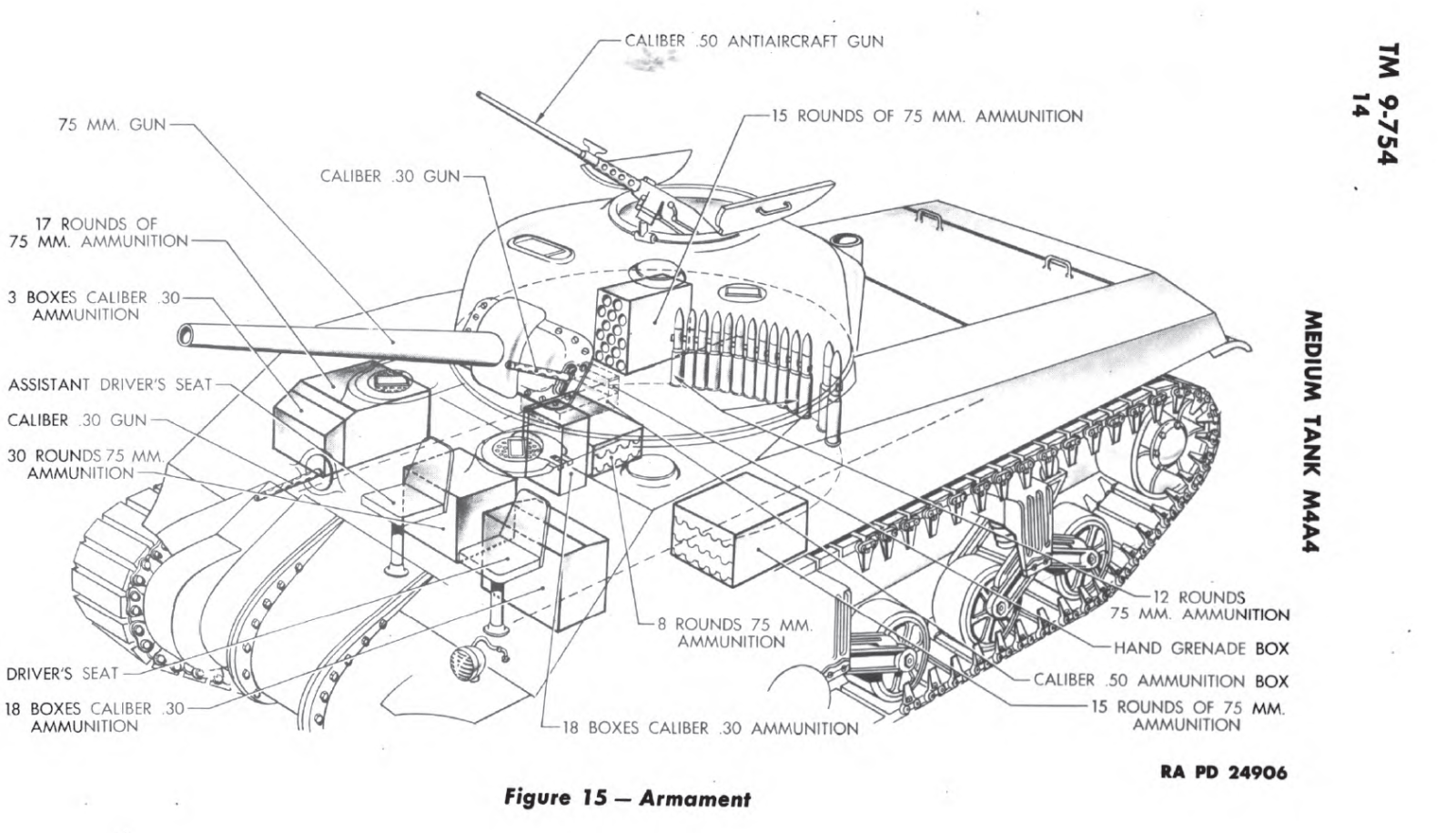 This was partially solved by adding armor to the ammo racks and removing the ready rounds stored around the side wall of the turret,(see image to the right and below) and adding an armored ready rack to the turret floor.It was solved by moving all the ammo to the hull floor, and adding water jackets to the ammo racks making the Sherman the least prone to burn tank of the war. We should also know that all German tanks were gas powered as well, and very prone to ammo rack fires, and in many cases, gas fires caused by poor designs, and horrid quality control, and slave labor factory workers. Early Panthers were so prone to fire, they tended to catch on fire just getting off train cars, or going over terrain that tilted the hull.
This was partially solved by adding armor to the ammo racks and removing the ready rounds stored around the side wall of the turret,(see image to the right and below) and adding an armored ready rack to the turret floor.It was solved by moving all the ammo to the hull floor, and adding water jackets to the ammo racks making the Sherman the least prone to burn tank of the war. We should also know that all German tanks were gas powered as well, and very prone to ammo rack fires, and in many cases, gas fires caused by poor designs, and horrid quality control, and slave labor factory workers. Early Panthers were so prone to fire, they tended to catch on fire just getting off train cars, or going over terrain that tilted the hull.
After several searches by different people, no one has been able to find an add from the Ronson company that uses the Lights the First Time, Every Time phrase, see this thread, and this thread the original that spawned it. You can find some info here too. They have many links to period and newer advertisements, but no Ronson ads even came close. So far, no one has been able to produce wartime documentation of that saying actually being used. Some flamethrower equipped Shermans were called “Zippos”, but because of the flamethrower, not for a tendency to ignite. There was also a British Flamethrower named a Ronson, so that may have added to the post-war, poorly documented history that started it.
As far as I can tell, this nickname really seems to stem from a one pop history book, and a bad docudrama on the history channel that stars the man most responsible for the Sherman’s PR problem, Belton Cooper. He, along with the tabletop Wargame makers of the 60, 70 and 80s really cemented this misinformation into popular culture. This coupled with several Hollywood films like Patton, Kelly’s Heroes, and The Battle of the Bulge, the Sherman had taken a serious hit on its war-winning reputation. Even some big name historians included the slogan in their works, even while trying to repair the tanks soiled reputation. It is possible it was called a Ronson or Zippo during the war in a widespread way, but so far, no one, even when challenged has been able to find any solid proof. The people who really get stuck on this one have a hard time giving it up because it accounts for a big chunk of what they call evidence for the Sherman being a bad tank.
It’s well-known soldiers bitch, and often suffer from grass is greener syndrome, but I’ve read more accounts of the men who used the Sherman loving them, it may be conditional, or not without complaint, but it’s really hard to find an actual tanker that hated the Sherman. When your Sherman happens to bounce a few rounds off a Panthers frontal armor before another Sherman took it through its thin side or turret side armor, it’s going to be disconcerting, what the Chieftain of the WOT forums calls a significant emotional event, and these things can shake your confidence in your tank, in particular, if your new to the job, and or don’t know all the problems the Germans crews had to deal with to keep their tracks fighting.
If crews complaining about their gear, actually makes it bad in all cases, then there are very few items of military gear considered good. I know there are several videos out there of WWII vets talking about the Sherman having thin armor and being a death trap, but in many cases, these guys were not even tankers. I’ve read many accounts of Sherman crews loving their tanks. They knew that tank was a hell of a lot safer in most conditions than having to be outside it fighting on foot. Many of these men have a deep affection for the Sherman, and there are pictures of these men crying when they see one again.
The Sherman tank had its share of flaws, and the Army and the guys who designed it worked very hard to improve the design throughout the war, and they did well, the late war Shermans were great tanks. In retrospect, a better gun was the only big design flaw you can pin down as a serious problem. Even so, the war would not have changed much if the Army had forgone development of a new gun for the Sherman the whole war, and it would probably have only cost a few more lives. Especially in the final days of the war in Europe, the 75mm gunned Sherman was an effective weapon against infantry and soft targets. More so than the 76mm armed Shermans, and was only exceeded by the 105 tanks, since German armor was so rare, and the main threat to tanks was panzerfaust, Panzerschreck, and AT guns, the 75mm armed Sherman may have been more effective and shortened the war. That said, a 90mm armed Sherman would have been RAD!
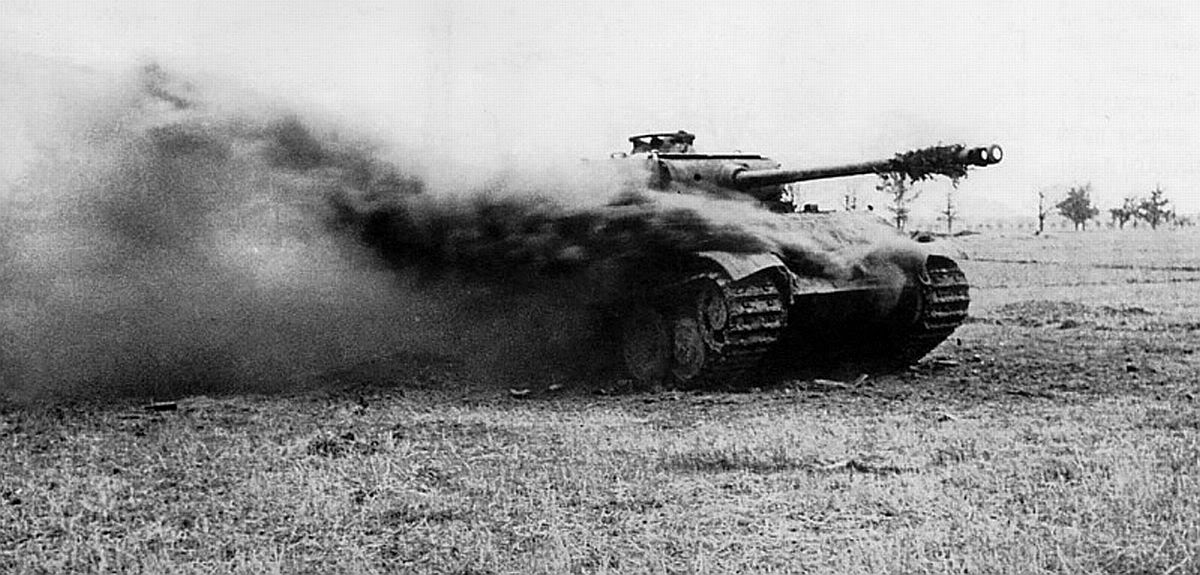
The Only Shermans to come with HVSS suspension had 76mm M1A1 guns.
As has been mentioned in this very document, HVSS suspension was pretty common on M4A3 75 W tanks produced in 1944. Several hundred if not thousand got HVSS suspension. We also know the M4 105 was produced with HVSS, as was the M4A3 105. This can all be confirmed by the wonderful Sherman Minutia site.
But lets prove it wrong with a pic. 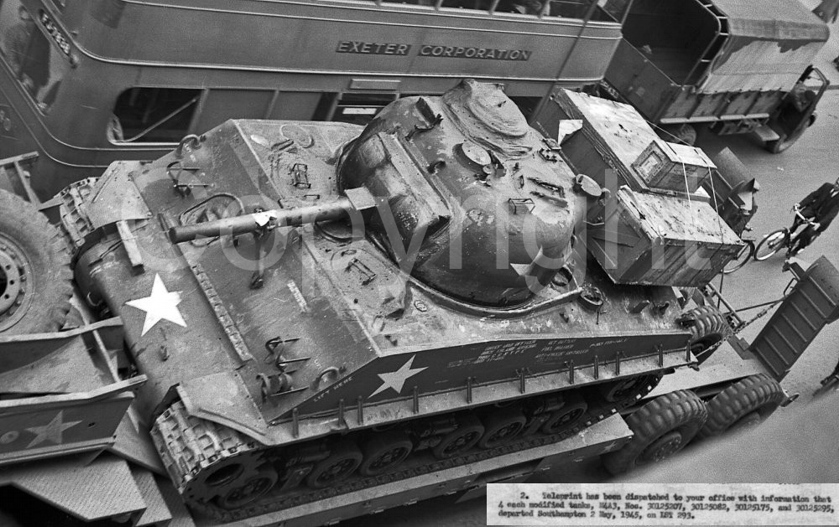
The Sherman was made to be basic, cheap and easy to produce, and not to last. They were not high-quality vehicles and had to depend on numbers to win.
This simply is not true. The Sherman was an advanced tank for its time. It incorporated a gyro-stabilized gun, a full set of advanced FM radios(the most advanced tank radios in the world, and a generation ahead of the German junk), and an auxiliary motor for charging the batteries, and sloped armor. The design could use either a cast or welded upper hull, without changing the other parts, and that’s pretty amazing considering the tank was designed with slide rulers. Every part of the Sherman was well produced, finished, and reliable in its dimensions. The design with minor modification could accept 5 different motors. The design had five reliable motors to choose from, and even the worst was more reliable than German motors.
The design tolerances were so close, parts manufactured at any factory, would work on any Sherman. That may not sound like a big deal, but at the time it was. The Germans could not produce tanks in the same way, and this was a huge advantage for the allied tank forces. Many of their tanks required hand fitting of parts. The early Shermans were all finely fitted, with beveled edges on the armor plate and all castings finely machined. The interiors included cushions for crew comfort and each crewman had at least one periscope. The huge castings used to make the upper hull of the M4A1 were a technological feat as well and not reproducible by any of the Axis nations. This was not the only part of the M4 they could not reproduce, the all-aluminum GAA V8 was a technological powerhouse, they could not have copied and not only because they didn’t have the aluminum. It was all the precise gears found throughout the motor, and don’t think they could copy the 6046 or A-57 either! But wait, that’s not all, let’s not forget the stabilized gun, something the Germans were not able to copy during the war. You can also make the argument the reliable and powerful hydroelectric turret drive system was beyond them, as was the all-electric alternate system that could be found in some production runs.
The Sherman was certainly not built to be easily worn-out and replaced. One of the reasons the basic 75mm M3 was chosen was because it had a 1000 round or more barrel life. All the motors were good for more than 5000 miles. The transmissions and final drives more than that, and that’s miles, not kilometers, like with the Panthers 150 kilometer final drives or 1500 kilometer transmission or 2500(lol maybe, I’m being nice) kilometers on the motor. You could get up to 2500 miles on most of the track models the Sherman used. The road wheels were easily replaced and rebuilt, and the springs in Shermans are holding up fine to this day on most of the ones still sitting around. The Brits put 2500 miles on M4A4 in a single test if I recall right, 10,000 miles on most of the motors in the A57 wouldn’t be impossible if no one was blowing the tanks up. `
For such a reliable tank, it was designed with ease of maintenance in mind and it was relatively easy to swap out the motor or transmission/final drive. The suspension units bolted on, so replacing one damaged beyond repair was very easy, or easy by tanker standards. Everything had grease fittings, and most were easy to reach. All the bearings were of the rebuildable or replaceable type. High-quality ball or roller bearings were used throughout the drivetrain and motors. There were often two generators powered off the drive train and or motor, and the auxiliary generator with its own motor.
These tanks also took upgrades well, being up-gunned with guns up to 122mm, and re-engine with more modern motors. The French and Israelis did most of the work in this area and these tanks will be covered in their own section. The point is, no other basic tank chassis lived as long as the Sherman did, with some South American nations keeping theirs in use well into the 80s or later since a few have recently been reactivated for training use. This same tank design was easily adapted into civilian uses as well, something I don’t think many other designs can claim with Shermans being used in construction, logging and drilling and a few other industries.
Cheap tanks rust away, they don’t run for decades, often on the same drivetrain parts. Complicated poorly engineered tanks like the panther or tiger are still around, most locked away in a museum in non-running condition. A few of those museums bring out the German monsters every once in a while, and drive them a few hundred meters, maybe more for the more reliable Tiger I design, and then store them away, praying they get enough in donations to keep the German steel monster running after the damage done that year by running and driving the damn thing. The Shermans at those museums start right up, run, get used in movies, and then get put back on display without the drama and worry that it won’t start up the next time or if it doesn’t it won’t be impossibly expensive to fix. There are a few rich men who own a running Panther, or some other German Tank, but they are rare, and the tanks are in many ways better than new, and still probably won’t make it past 150 kilometers before they have to overhaul the final drives. There are a hell of a lot more well-off men that own Shermans and can afford to drive them around whenever they feel like it.
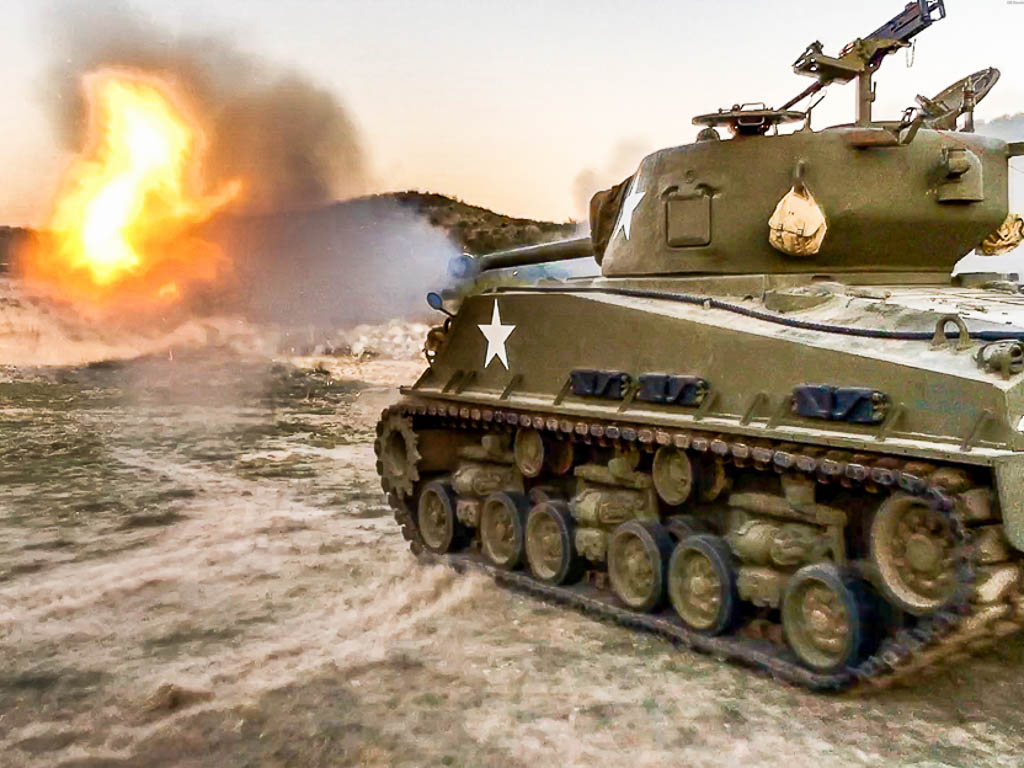
US tank production wasn’t optimized, and their supply system was overburdened by the number of different subtypes of tanks they used. With the Sherman, in particular, using four different power packs.
This myth is absurd. The main reason the United States produced Shermans with four different power packs, was they thought the bottleneck in producing the tank in great numbers would be outstripping of the supply of R975 radial engines. That never really happened, in part because the Army had three other viable engines, and produced them all. They were able to keep this from complicating the supply situation too much by limiting who got what models, with the US Army using a version with the R975, the Brits using the diesel and A57 multibank, and the Russians getting only M4A2s variants. They had enough surplus production in R975 production; they built a factory for the M7, another tank that would have used the motor, and one for the M18 that also used it. The M7 was canceled but a lot of M18s got produced.
This diverse Sherman production never hurt tank production speed in any way, and since the continental US was damage free, shipping parts between factories was easy enough. The US had a massive rail system and was still producing locomotives. When the Army started to move to the M4A3 as its primary tank they released more M4 and M4A1 tanks to their allies. The US actually had a tank production surplus for a short time and was able to close down all but the best three tank producers. Hell, they even built a factory to produce the M7 medium tank and then never built it. These are the types of errors you can make when your country is an untouched industrial powerhouse.
The only reason you can say tank production wasn’t optimized is because it was never maximized after the first panicky year of the war. This wasn’t because it couldn’t have been increased, or any production problems, it was from the US war production board looking at tank needs and deciding we had more capacity than needed and cutting it back. The US produced tanks for just about everyone and could have produced more if there had been more nations that needed them.
The US by the end of the war had three things the Germans never had, tank arsenals, factories produced from scratch, for the sole purpose of producing tanks from start to finish, with a production capacity the Germans could only dream of. In fact, CDA had contracts reduced before it ever got to full production capacity, and they were producing a lot of tanks. Three of them, letting them shut down tank production at all other factories so they could switch to other things
The 76mm armed Shermans were good, but they were like super rare, and not common until well into 45. Plus the extra weight of the 76mm turret made them slower, and like the gun blinded the crew when it was fired.
The levels of 76 armed tanks steadily increased after their introduction during Cobra. They went from a low of 6.7% in August of 44 to 30.1% in December, to 41% by April of 45. The extra weight did have a minor impact on off-road mobility, but duckbill end connectors helped and the increasingly common HVSS tanks after December of 44 solved this issue.
M4A1 76w Shermans were sitting in depots in England, on D-Day, because no one wanted to introduce a new vehicle at the last minute because there was no time to train on them, and no one saw an urgent need for them. Most of these tanks had the early M1A1 gun without a muzzle brake. There was a little truth to these tanks blinding themselves when the gun fired, in the dusty summer conditions it was introduced in, but once it started raining and snowing this issue faded, and also tanks with muzzle brakes started showing up.
Tanks like this were showing up by operation Cobra, by the battle of the Bulge they were nearing 30% of the US medium tanks in Europe. By the end of the war, the 76 armed Shermans were approaching 50%.
You know if you had to fight in a tank in WWII, you would want to be in a Tiger or Panther!
This is a very common argument or myth that comes from German Armor “fanboys” also known as the infamous ‘Wehraboo’, and they will sometimes be shocked if you say no, as if they thought the info about the Sherman being a better tank was all lies, and when faced with the ‘truth’ of combat you would have to choose their favorite German tank. This is a really silly argument, but a very common one, so I’ll cover it.
So first off, let’s go over the German side, one, no matter what tank choice I was given, I would not fight in or for Nazi Germany. Moral problems with German tanks set aside there still isn’t a Nazi tank I would want. The PIII is too limited and inferior to the Sherman in all ways, the PIV is inferior to Sherman 75 in all ways let alone the 76 armed Shermans. The Panther was unreliable junk, maybe if I really wanted to avoid combat, it might be a good choice, but it stands a good chance of killing you in a fire caused by its poorly designed fuel system or carburetors.
No, if I had any tank to pick from it would be the M26 Pershing. This tank made it to the war pretty late, so many German army “fans” will object cause it so little combat, but there were more M26s produced before the war’s end than Tiger IIs. They will also try and say it was an unreliable vehicle. The unreliable part gets played up too much on the M26, it’s real problem was it was underpowered.
The M26 Pershing would not have seen production if it had not met a basic level of automotive reliability the Army could find acceptable, the Army would not have started building it if it had not met basic reliability requirements in testing. It was not as reliable as the M4A3 because the design was not as old, and the engine was overburdened a design problem…
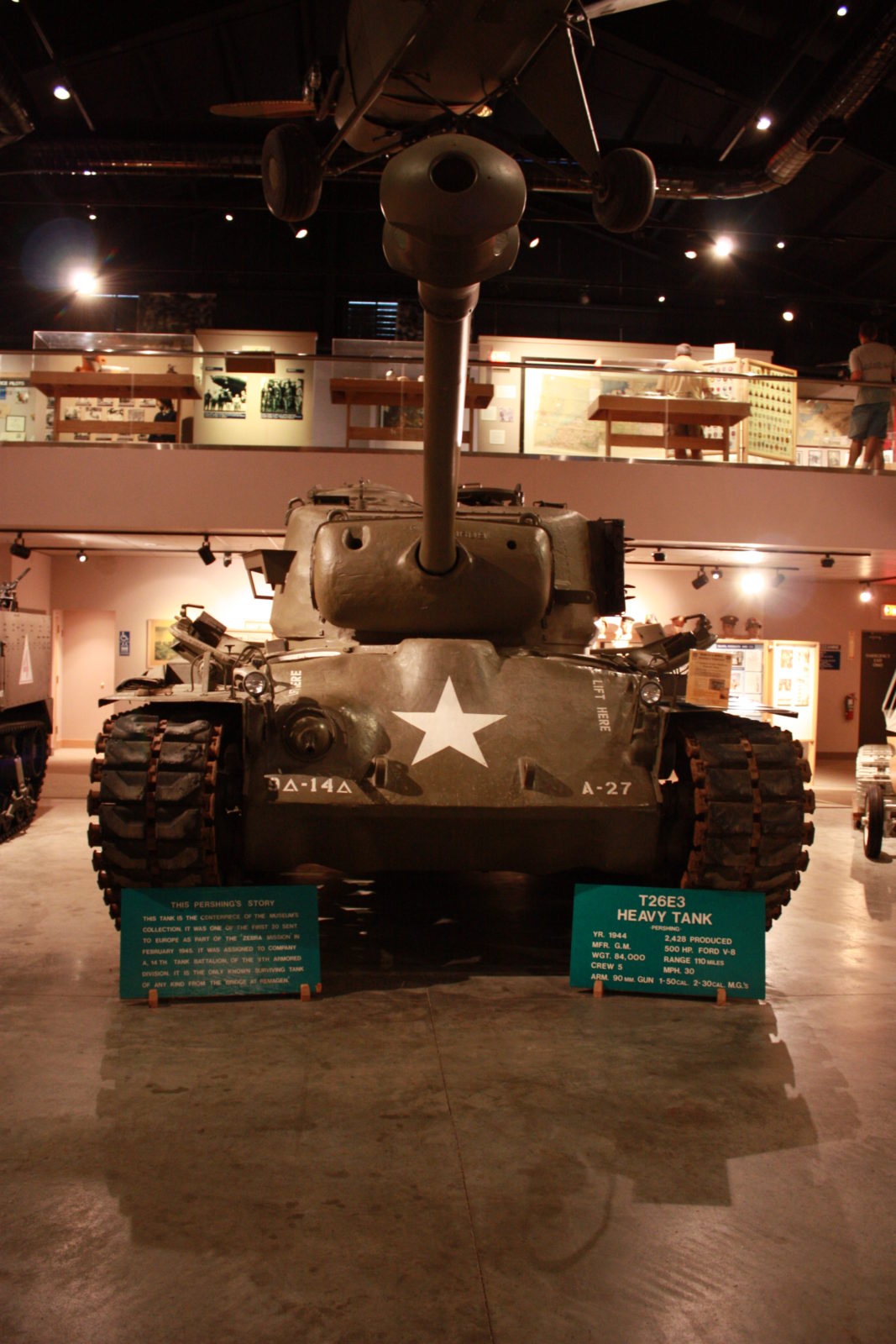
I’ve also read the Zebra mission tanks that made it over before the end of the war were lavishly supported and amazingly reliable. It had some issues in Korea, some caused by poor replacement parts or lack of them, and others from lack of skill on the driver’s part and lack of experience in the crews. At the beginning of the Korean War, when the Marines got issued M26 tanks for the first time they got less than two weeks to train on them. Like the panther, the Pershing had to be driven well, a jerky driver could cause fan belts to break or slip off the cooling fans overheating the motor. The Panthers problem was much worse, if the driver wasn’t smooth, he could destroy the final drives in the panther very quickly, if he used features of the vehicle he could destroy the transmission. Neither of these problems is as simple as putting the fan belts back on and adjusting them.
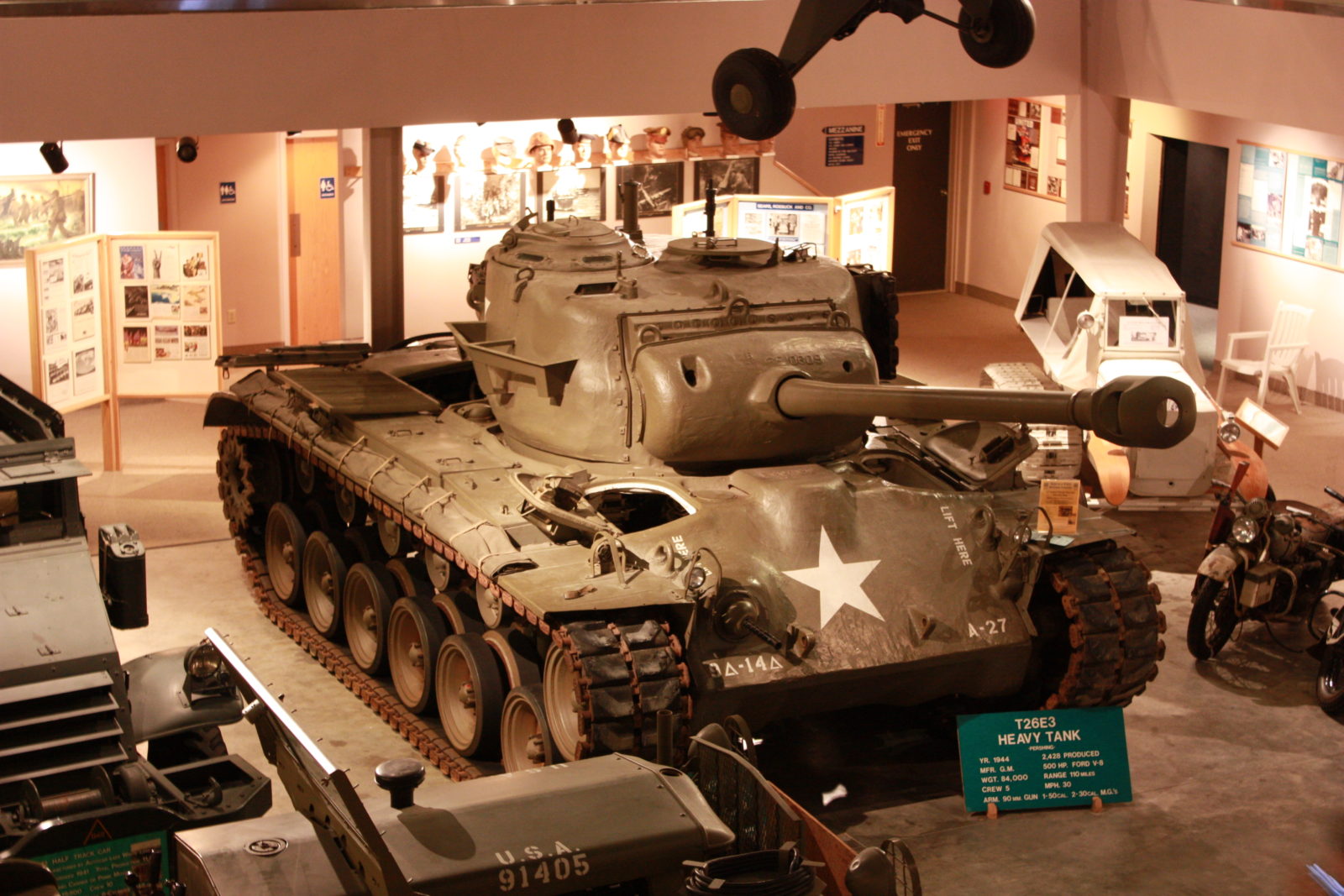
The M26 usually won’t be allowed by the ‘fan’, so my next choice would be an M4A3E8 76W tank. Because these were the best Shermans produced. They had a great motor for a tank in its weight range, and it had a decent gun, and ok armor. Its armor could be upgraded in several ways as well, as we’ve shown with sandbags, concrete or armor plate from other tanks. Because of the large hatches, the escape hatch, and the wet ammo racks, the late production Sherman was about the safest tank of the war to be in while it was being shot at. While in Pershing or E8, it would not be the poorly crewed, unreliable Panthers, or the mythical lottery tank, the Tiger, no, I would fear the German 75mm AT guns and really big mines, and crazy hardliner Nazi holdouts with AT sticks. Not the Cats.
Fun Facts: Stuff to make German Armor Fans Cry.
The M4A1 Sherman Was So Advanced In Design; The Germans Could Not Have Produced A Copy. (The M3A1 Lee as well)
Even if they had been given the blueprints. They simply lacked the technology to make a large casting like the whole upper hull of a tank. This type of casting was leading edge technology in the 1940s and the US was a world leader, the Germans, were not. They probably couldn’t even cast the standard 75mm turret.
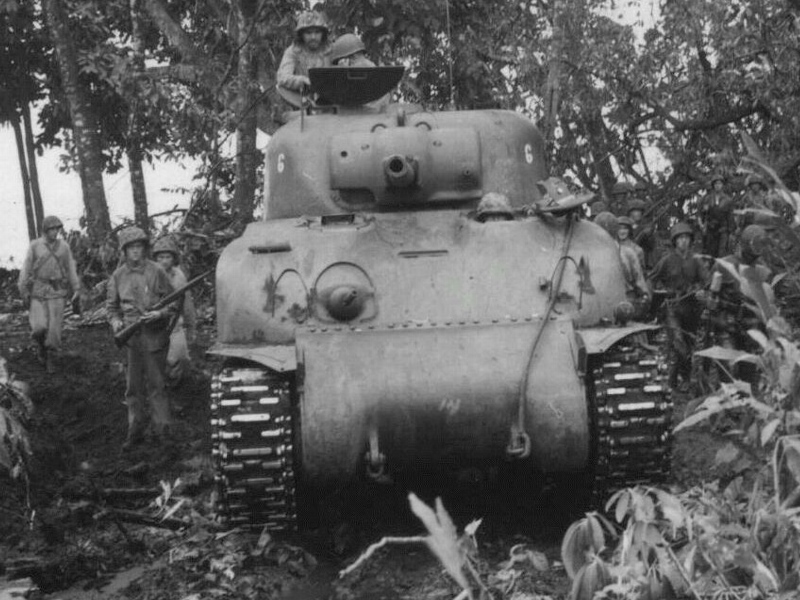
The Germans also had nothing like the gun Stabilization system the Sherman had, and the Lee also had for its 37mm gun. The Germans also had a lot of trouble producing tank engines in the 400 to 500 hp range that was reliable enough for tank use. The US had four to choose from.
The Germans liked the Sherman and T-34 so much they rebuilt any they captured and used them in combat.
It was not uncommon for the Germans to have whole tank units filled with captured and slightly reworked T-34s and M4A2 tanks. The Sherman would be a refreshing surprise on the reliability front, and probably as easy to keep running as their native PIII and PIV tanks. They had whole company size units made up from these captured tanks.
They also liked to convert these captured tanks into ARVs, since their native armor was such an automotive disaster and couldn’t take the added stress of recovering tanks. In the west, they also used captured allied tanks, and there are pictures of just about every model and submodel of Sherman with Nazi markings.
Nazi Germany never developed and deployed ‘Funny’ Tanks, no dozer blade kits, no mine clearing tanks, no floating tanks not even a good ARV.
There are several reasons for this. For dozer blade systems, their tank automotive systems were just not reliable enough to take the extra weight. The Shermans M1 Dozer kit added more than 7000 pounds to the tanks weight. This would have immediate failures on Panthers or PIV drivetrain if they tried to install similar kits. The Panzer III might have been able to take the extra weight, but the PIII had really gotten long in the tooth by 44.
For mine clearing, it was common practice for the Nazis to march Russian prisoner or civilians through minefields to clear them, so maybe a mine clearing vehicle wasn’t the top priority. I don’t think marching civilians or POWs across fields would set of AT mines, but maybe they did the same thing with civilians in cars or trucks? In any case, any mine clearing conversions would have to be very stripped down to take the added weight of any of the mine-clearing contraptions that have been tried over the years.
They did modify tanks for use as ARV, but used captured tanks, and never developed a good ARV on their own. The same automotive reliability problems that prevented the Germans from producing a tank dozer or any kind of a mine-clearing tank probably prevented them from using their own designs as ARVs as well. The Germans main tank recovery vehicles were large 18-ton half-tracks equipped with a bunch of special towing and recovery gear, and tank transporter trucks. With a good winch, some strong anchor points and pulleys, you can pull a lot of weight. They also used any captured ARVs, and would often modify a T-34 or Sherman for use as an ARV because these tanks were both reliable, and had automotive systems that could handle the extra wear and tear ARVs go through.
There is an exception, the Bergepather, a dedicated ARV based on the Panther chassis, which worked ok by Nazi standards. It did have many of the same problems the Panther had since it used the same drivetrain. Now, because it had the turret removed, it was much lighter, but it also had a big heavy PTO winch installed where the turret normally resided. It used the turret drive to power it, meaning the Panthers motor, for maximum pulling power, you’re running the Maybach at max RPM, and we all know how that goes. It was also designed for a wonky form of recovery, were it backs up the knocked out tank, hooks up its cable, then drives out the full length of the cable, lowers the spade, and slowly while straining the motor, drags the dead tank right back up to the rear of the Bergepanther and then this is repeated until it was out of the danger zone and could be loaded on a truck. It could also just hook up and tow a tank out if the terrain wasn’t too bad. It used a large wooden block as a pusher bar, instead of having the spade in the front, so it would be useful for more than just as a towing anchor, anyway, it used the same goofy overlapping wheels, with all the problems that came with them, for no advantage at all on an ARV. They did give it more fuel tanks, so it had a better range, and since it weighed slightly less, the automotive components had a chance of lasting a bit longer, but still not a great ARV.
For floating tanks, well, they tried deep fording tanks, and possibly even underwater ones, but never floating ones. In my opinion, without complete air superiority, and the quick capture of a large port, the Germans couldn’t take England. They are very close to mainland Europe, making the need for a huge number of ships slightly smaller, but really not much. Then you have to look at the German Navy, and ocean-going cargo capacity. They would lack all the specialized ships the Allies came up with the make amphibious landings viable. They had no huge transport fleet. No specialized LSD, no LSTs, no LCT, LCM, LCI, and not battleships or other capital ships worth a damn. For amphibious warfare, you need a real fleet, not a pair of overrated battleships and fat useless cruisers.
Sources: Armored Thunderbolt by Zaloga, Yeide’s The Tank Killers, The Infantry’s Armor, and Steel Victory, Sherman by Hunnicutt, Combat Lessons, The Rank and file, what they do and how they are doing it 1-7, and 9. Archive Awareness, Oscar Gilberts, Marine Tank Battles in the Pacific, WWII Armor, Ballistics and Gunnery by Bird and Livingston, Tigers in the Mud, by Carius, D.W. to Tiger I, and Tiger I & II combat tactics by Jentz, Panther Tank by Jentz, Panther and its Variants by Speilberger, Panzer III and its Variants and Panzer IV and its variants by Speilberger, The Sherman Minutia Site, Son of a Sherman by Stansell and Laughlin, M4 Sherman tank at war by Green, Tanks are a Might Fine Thing by Stout, the Lone Sentry, DOA Army Battle Casualties and Non Battle Deaths in WWII, FKSM 17-3-2 Armor in Battle, FM17-12 Tank Gunnery, FM17-15 Combat Practice firing, FM17-30 The Tank Platoon 42, FM17-32 The Tank Company medium and light, FM17-33 The Armored Battalion, FM17-67 Crew Drill and Service of the Piece M4 Series, Another River, another town by Irwin, Tanks on the Beaches by Estes and Neiman, Cutthroats by Dick, The Myth of the Eastern Front by Smelser and Davies, Tank Tactics by Jarymowycz, Panzer Aces by Kurowski, Commanding the Red Army’s Shermans by Loza, The French Panther user report, Wargaming’s Operation Think Tank Videos .
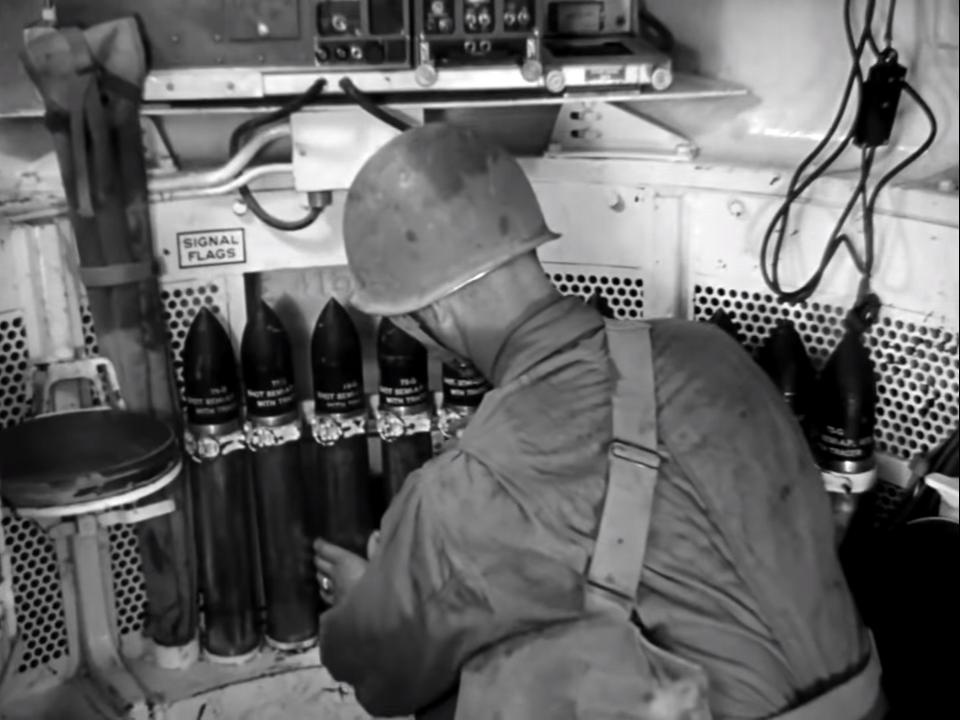
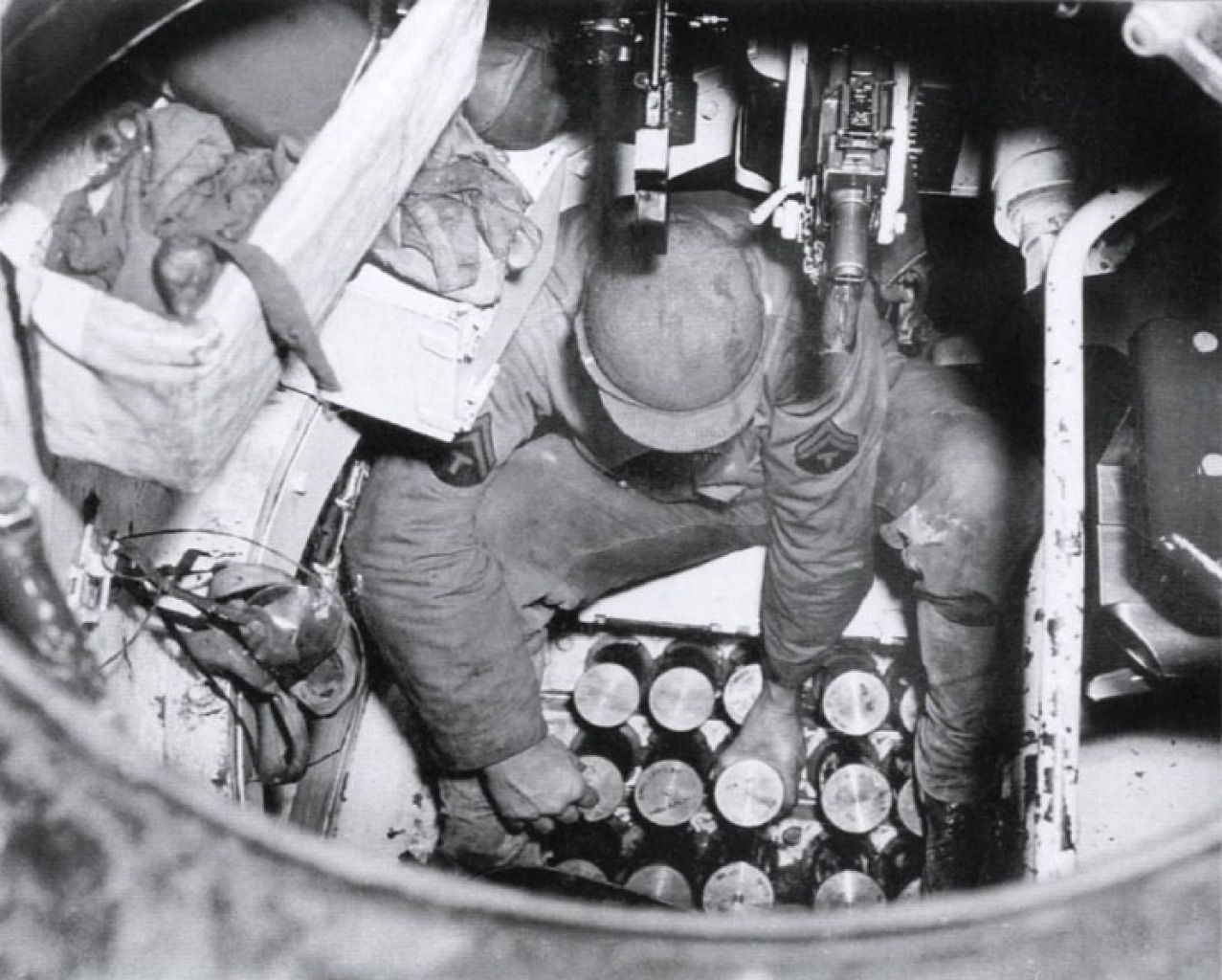
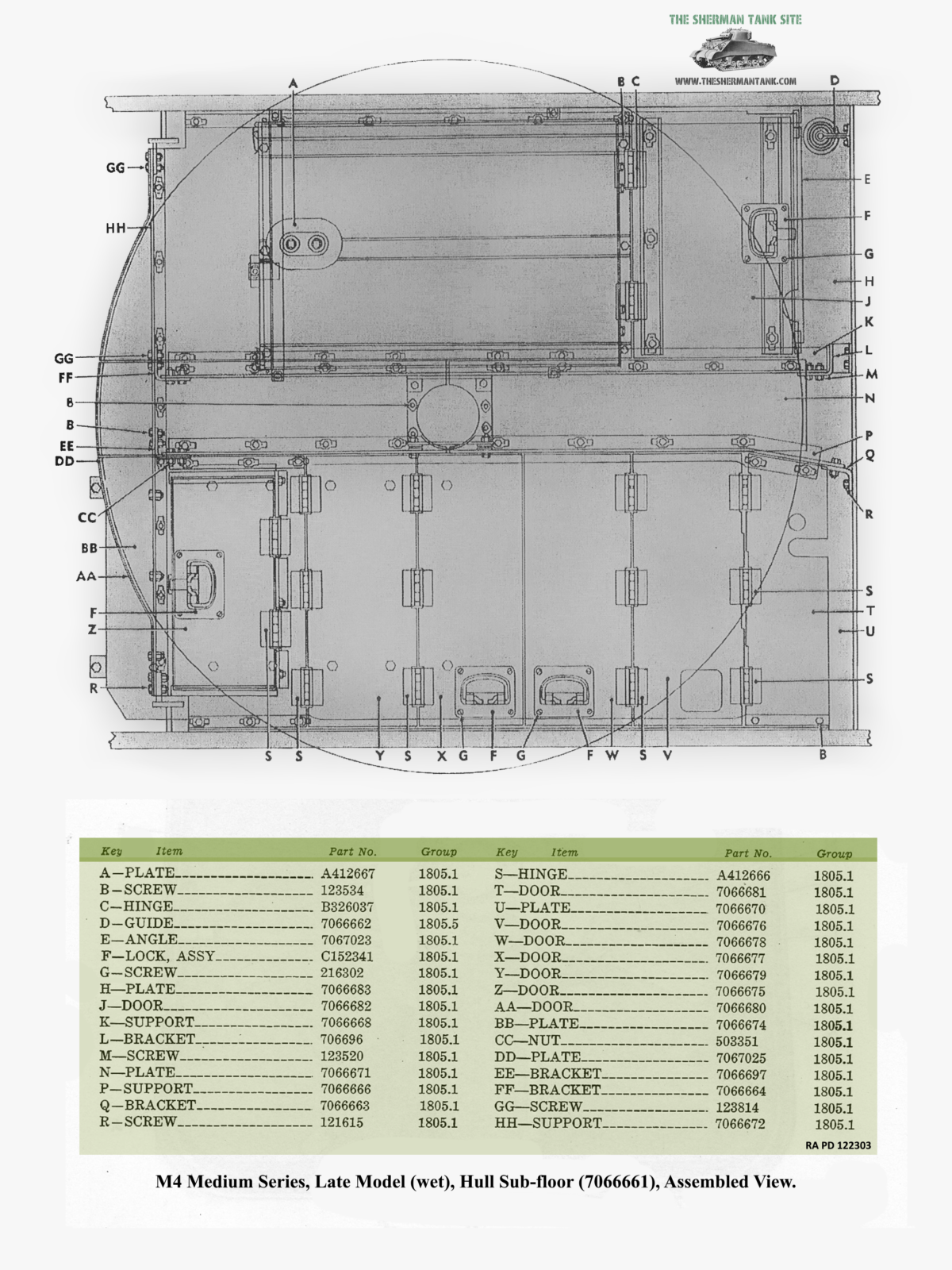
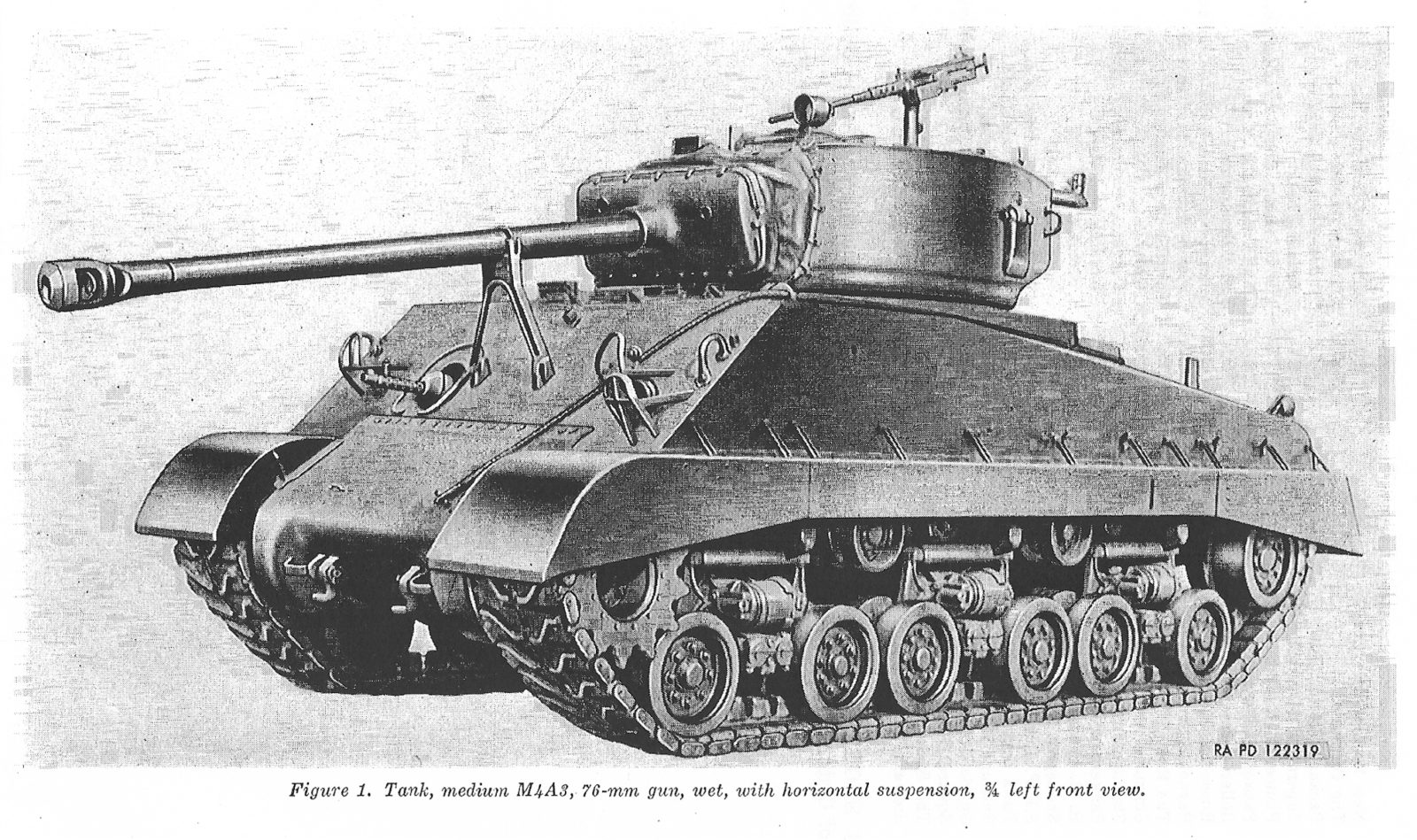
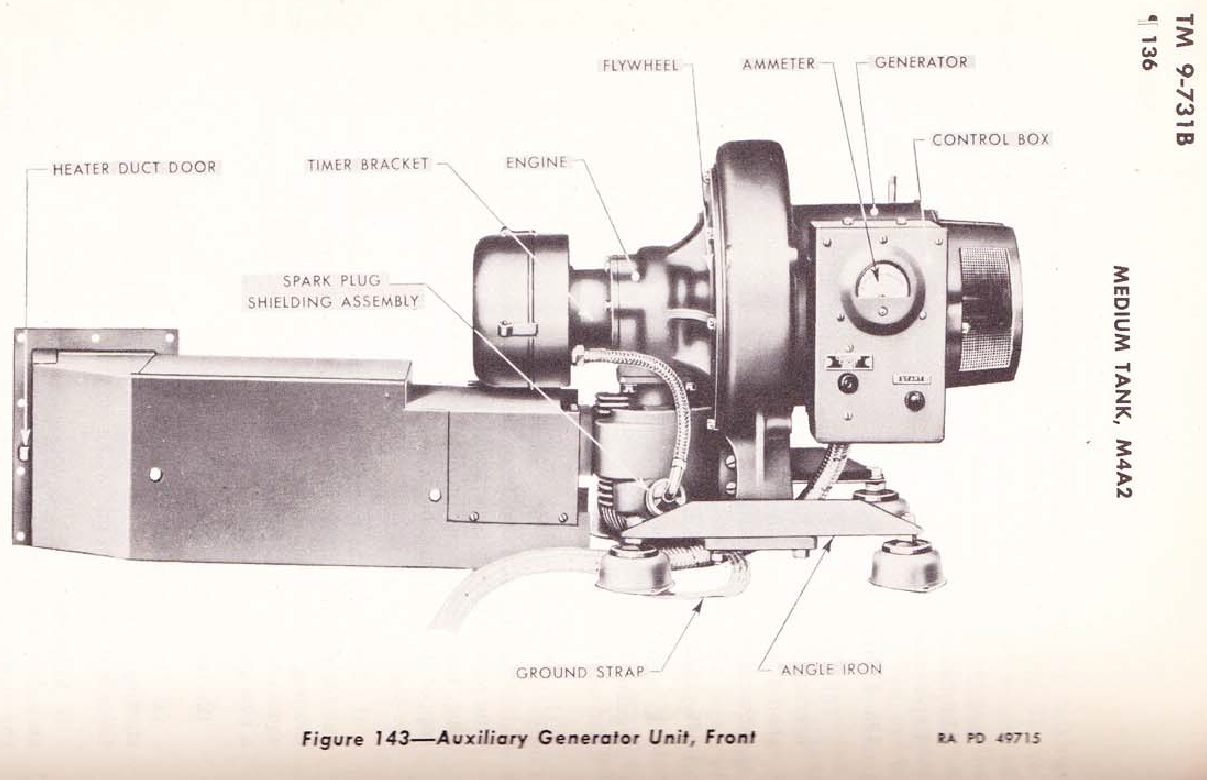
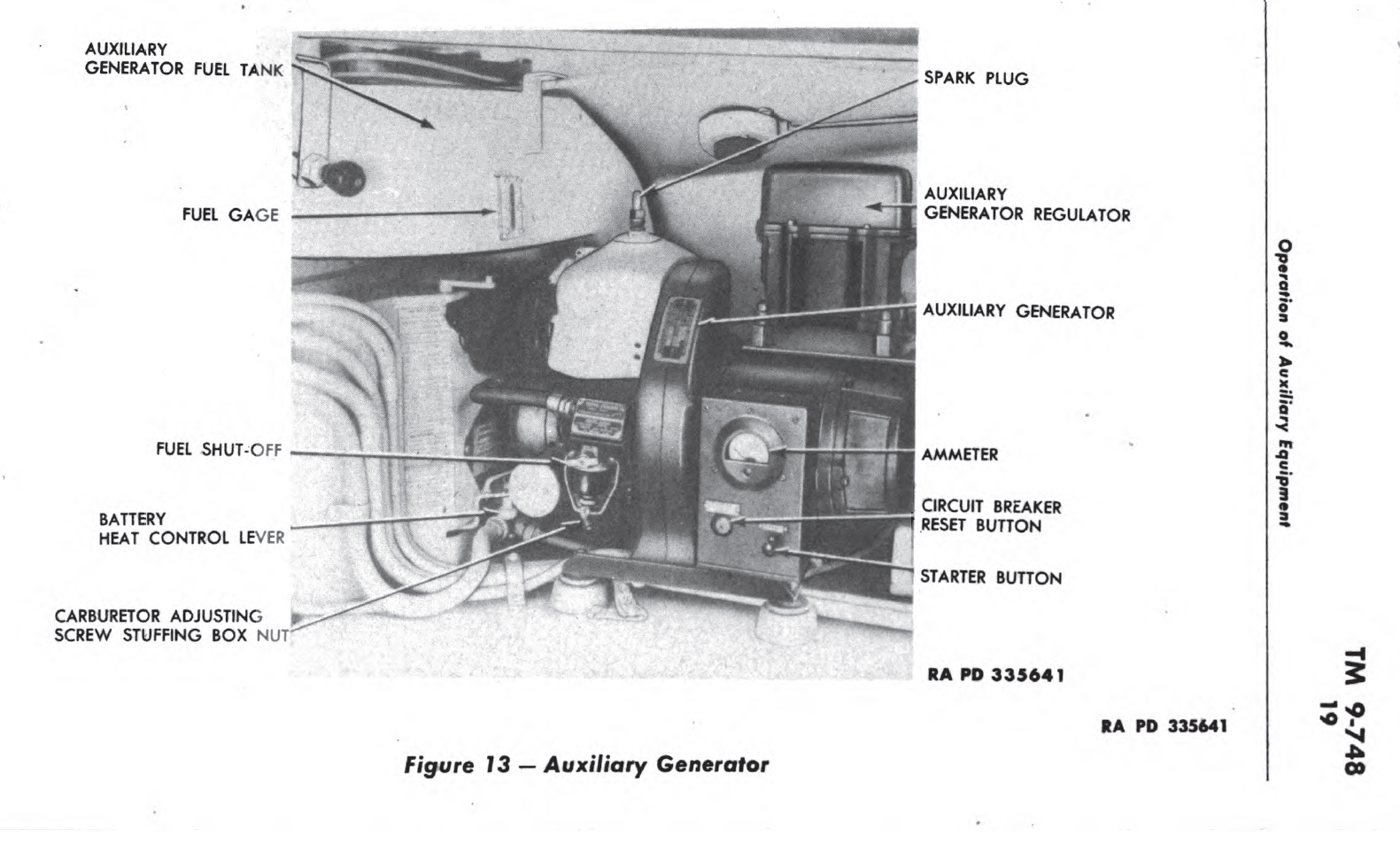
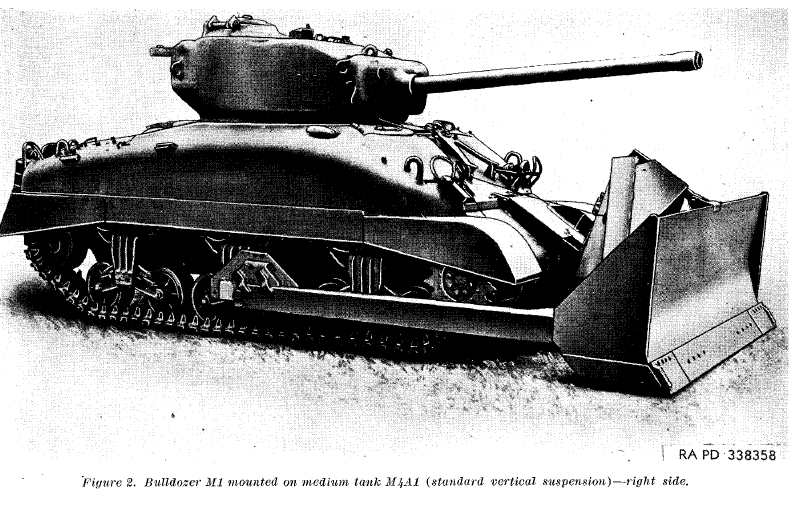
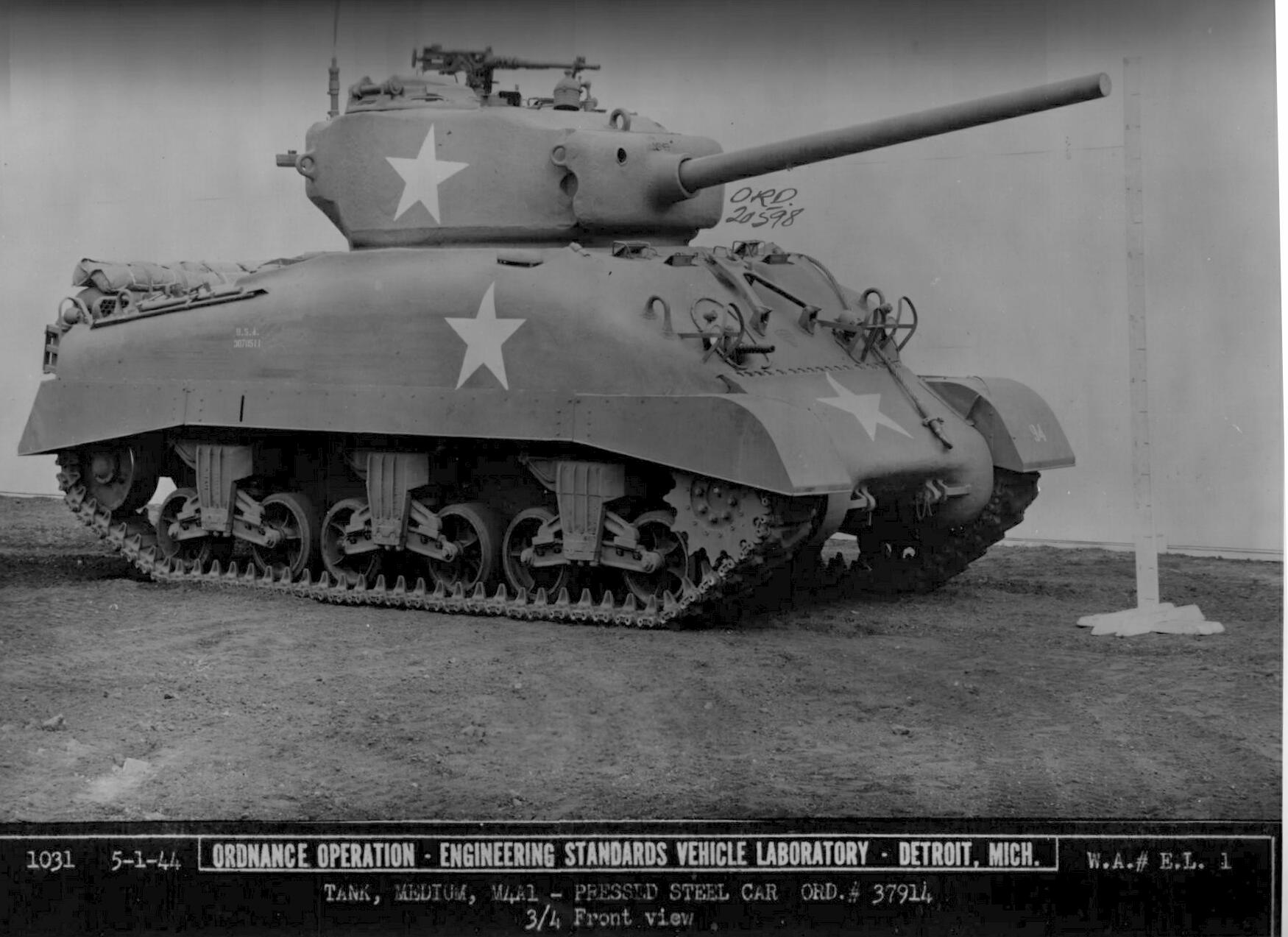
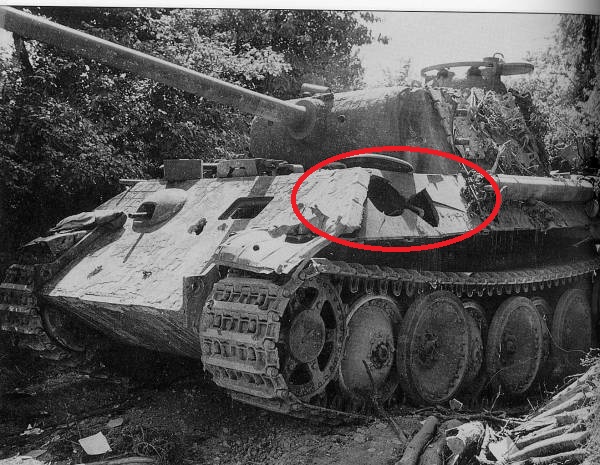
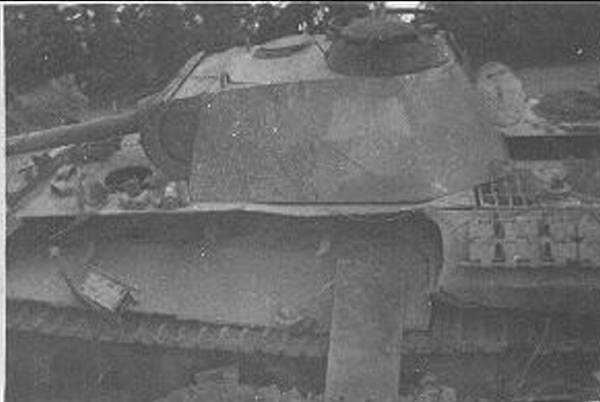
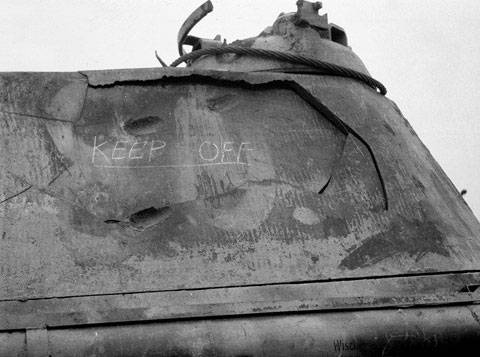
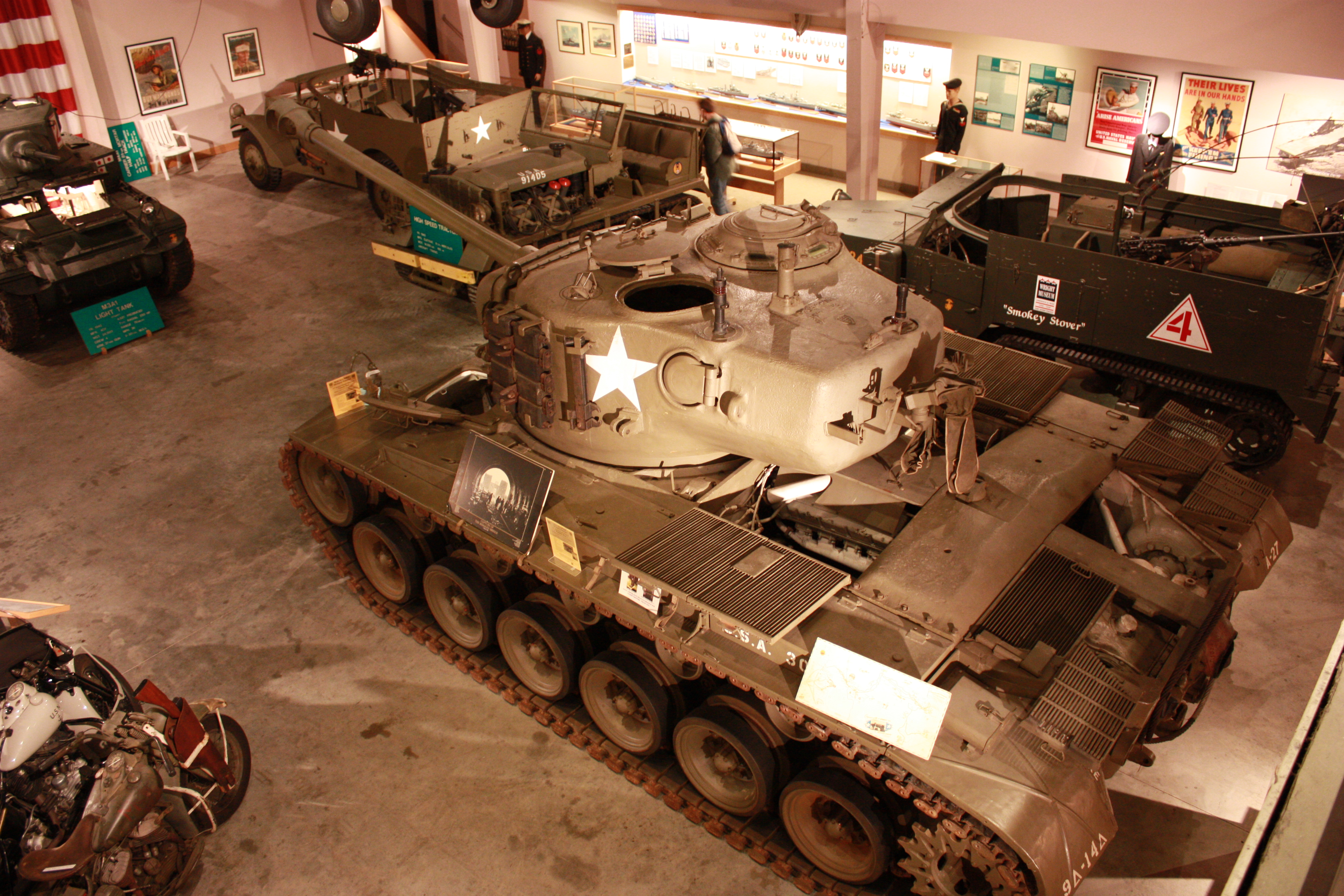
Heya i?m for the first time here. I found this board and I find It really useful & it helped me out a lot. I hope to give something back and help others like you helped me.
What an excellent and fascinating website!
Definitely in the trivia category but there is a story in the 1945 Regimental magazine of the 8th King’s Royal Irish Hussars which describes the short post war attachment of Sgt Smith, A Sqn 8th Hussars, to the US 35th Tank Regiment at Landshut. Sgt Smith relates how he referred to their Shermans as ‘Ronsons’. Could this be the earliest documented reference to this rather unfair nickname?
Sorry, but you are just plain wrong on a lot of points. Interleaved suspension DOES have plenty of benefits, question is whether they are worth the downsides.
“For floating tanks, well, they tried deep fording tanks, and possibly even underwater ones, but never floating ones. In my opinion, without complete air superiority, and the quick capture of a large port, the Germans couldn’t take England. ”
The same was true for the Allies. Why is that a shock? DD tanks were invented to get a handful of tanks onto a beachhead so we could IMMEDIATELY go and capture a real harbor, which was considered essential. It was never planned to sustain the invasion over the beaches, and 99.9% of tanks would not have to float to get ashore. In the end the US managed to sustain the advance over the beaches because they failed to capture a working port, but it was very wasteful and expensive and difficult. And we did have Mulberrys. Without a vast fleet of landing craft, we would have been screwed.
“Most of these tanks had the early M1A1 gun without a muzzle brake. There was a little truth to these tanks blinding themselves when the gun fired, in the dusty summer conditions it was introduced in, but once it started raining and snowing this issue faded, and also tanks with muzzle brakes started showing up.”
I dont get this. On the Jagdpanzer IV they had problems with dust BECAUSE of the muzzle brake, same with ISU-152, Firefly, etc. The problem was solved by removing the brake from the JPIV, and lived with with the others. Why would the reverse be true of an M4 Medium? Anyway, what you are describing is a blast deflector, not a brake, although a muzzle brake can also work as a blast deflector.
In any case, this is not a problem just with 76mm M4 Mediums, but something that all powerful gun tanks deal with. No doubt Panther and Tiger also had issues with visibility in dusty conditions.
The US COULD have built more M4 Mediums (I refuse to call it the ‘Sherman’ since no-one but the British called it that until well after the war) but it wouldn’t have done any good since we already had huge yards of tanks parked waiting t be shipped overseas. The main limiting factor in the end was shipping space.
And while I like the M4 Medium a lot, and consider the Panzer VI to be overrated, I suspect you are unfairly taking the worst case scenario when it comes to Panthers. I think the 150km final drive problem was an early-production thing, and I think even then it was that SOME Panthers final drives needed rebuilding AS SOON AS 150km. Not that every Panther had a final drive that lasted only 150km. And early production problems with engine fires is also not a widespread universal problem with Panzer VI, but a potential problem that needed to be fixed. I have no doubt there were cases of early M4s catching fire as well. Why else would peacetime tanks want built in fire extinguisher systems?
Tank would be built in “Peacetime” with on-board fire extinguishers for two reasons: (1) As Washington (and a LATER US General named “George”) put it, “In time of PEACE, PREPARE for WAR” (2) Considering the huge cost of AFVs, to not have an on-board firefighting system, a relatively modest investment, seems foolish. Fires occur with AFVs even absent combat.
A few things:
1) From what I’ve read, the T-34 was actually very unreliable. According to The Chieftain, there is also no hard evidence that the Sherman itself was per se mechanically reliable, but rather it was reliable at a strategic level, i.e. it was so easy to repair that if you needed all 100 say of your tanks to be battle-ready, all 100 would be battle-ready. The Sherman was far more reliable than the Panther and T-34 I believe
2) I’ve read that the claim of the Panther’s final drives only lasting 150 km is based solely off of the French report, but that Panthers operated by the Germans often made it further than that. Not necessarily much further as the final drives were a major weak point, but the notion that they would automatically fail at 150 km is not necessarily true.
I believe that for the Sherman’s (and other U.S. equipment) that the answer is “both A & B”.
Namely that not only were the parts easily replaced, and would fit perfectly, but also the reliability of each and every part was high! (The lock washer’s on a certain tank not being good for 3,000 miles (I can’t remember which tank, but Chieftain mentioned this in “U.S. Armor Development during WW2” video.). At which point the production was held up until they got one that did! (Instead of noting to replace them during a 1,000 or 1,500 mile maintenance period!). Note: It may have been 2,000 mile before a percentage of them failed. Also, “Myths of American Armor” may have been the Video.
RE 1)
The British tested some Shermans against two of their tanks, the excellent Cromwell and the far-from-excellent Centaur. ‘Exercise Dracula’ was a 2000 mile road trip, on tracks, around Britian, with daily stops for off-road excursions, firing trials and the like.
The Centaurs kept breaking down, so they were out. the Cromwells were pretty good, needing 0.07 man-hours of attention per mile travelled but the Shermans required less than half that. The Shermans were also quicker to bring into action after a long drive, needing much less tinkering to get them ready to fight.
Perhaps you can add a decent degree of individual reliability to the ‘operational reliability’ you mentioned.
http://ww2talk.com/index.php?threads/exercise-dracula-tank-showdown-aug-sept-43.72168/
After reading your post, you have a great website with interesting content. But I think you can improve your current google ranks by using SEO website traffic net. My friend uses it and it works great. Just google it, it’s very nice tool to bring you a lot of new readers on a daily basis. Keep up the quality work!
What about myth: 5 Sherman was needed to destroy 1 tiger and army expected 4 of them to be lost in action? I think that was done in Fury film (but poorly since no Tiger commander would have charged 5 Sherman’s but would have backed and keep impenetrable front armor and very hard penetrable side’s for them
p.s. I don’t personally think its Grass is Greener syndrome if you are armed 75mm M3 gun in 1943 and you can threat enemy tanks sub 300 yard effectivelly when they can take you down upto 1500 yards. So I do understand why some Sherman crews felt they were under gunned against Germans. I know I would feel if I would be in cased tens of thousands of tons steel and enemy can pop it open 4 to 5 times range your gun is effective against them…
Excellent analysis and commentary. I would add one point-THE Sherman was a MEDIUM tank. It keeps being compared to German heavy tanks. As you said its numbers and reliability were the important elements.
The reason everyone keeps comparing the M4 with Panther and Tiger is because the US chose to only make the M4 available to fight with. So it was all we had to combat Panthers and Tigers, thus the comparison is perfectly valid. What US heavy tank should we be comparing them with? The point is not just to compare statistics on tanks, or tanks that COULD have been produced. It is to determine the pros and cons of the tanks that actually fought.
In his video of “Myths of American Armor” Chieftain pointed out that the smallest Tactical Unit of U.S. Armor was a Platoon. Therefor, to knock out a single machine-gun nest, they would sent out 5 tanks!
If they were expecting to lose 4 tanks when sending out a Platoon, I imagine that they would send out a Company of Tanks (~18) to swarm the “Cat” and knock it out with fewer casualties!
Relative casualties depend as much upon the nature of the engagement, and the training, leadership, and logistics involved for each side. Yes, there were instances where Shermans “took it on the chin” from Panthers, and VICE VERSA. In particular, look at the debacle for German armor at the September 1944 Battle of Arracourt, where a Combat Command of the 4th AD was hit by 200 brand-new Panther and Panzer IV tanks to stop Patton from taking Metz. The trouble for the Germans was, their CREWS and COMMANDERs were also “new” (i.e, terribly inexperienced), let alone they had no air support, and their losses were correspondingly lopsided, despite the supposed superiority of the Panther over the Sherman.
This also showed in the August-September 1950 battles in Korea, along the Naktong River near Pusan, where the US tanks, almost all of them M4A3E8 Shermans, utterly pasted the DPRK’s T-34/85 tanks. This is the only known large-scale engagement of Sherman vs. T-34. Yet, does that “prove” the superiority of the Sherman? I say it does NOT. Other factors for “UN” success in those engagements include air supremacy, including the often-ignored effect of USN aviation, operating from carriers in the East China Sea and the Sea of Japan, taking out the DPRK’s logistical train. Not only did the UN tankers have close air support, where the DPRK had none, they had much better logistics, leadership, and doctrine. I can imagine that a SOVIET tank corps, the equivalent formation in the contemporary Soviet Army, with at least the presence of Frontal Aviation, led by officers and senior non-coms that had experience in the “Great Patriotic War”, would have performed significantly better, at least enough to where an objective comparison of T-34/85 versus M4A3E8 Sherman would be valid.
There is an a relevant ad that I haven’t seen mentioned in this and other discussions of the ‘Ronson’/Sherman/M4 linkage.
The 1/4 page advert is on page 88 of Life Magazine July 24 1944, and shows a stylised but very recognisable Sherman/M4 on a black background under the title “RONSON World’s Greatest Lighter”, with the slogan ‘Press, it’s lit”. It is visually/layout similar to several other ads showing an LST, jeep, bomber etc.
https://commons.wikimedia.org/wiki/File:Cigarette_Lighter_Advertising-_Ronson_Cigarette_Lighters_(Lighters_Only_Supplied_to_the_Armed_Forces),_Life_Magazine,_July_24,_1944_(8776821383).jpg https://books.google.co.nz/books?id=9E4EAAAAMBAJ&pg=PA4&dq=“life+magazine”+”july+24+1944” – see page 88
With being trapped in a burning tank a horrifying and ever present possibility whilst in combat (see Ken Tout’s excellent books), the difficulty of getting out – in early models only the TC had a big hatch, the gunner & loader had to wait for him to clear it, driver & BOG had small difficult hatches that would be blocked by the 75 mm barrel in some turret positions* – and it’s growing reputation for being quick to burn, one could easily see this ad being noticed and wryly/bitterly commented on/passed around/remembered by Sherman crews.
(*listen to https://www.youtube.com/watch?v=GdT-6vplS-I 46 mins. They did have a floor escape hatch which sometimes saved them. )
Life Magazine being a high profile publication, I suspect copies got to the UK as well as being read/carried by US Armoured divisions being shipped to Europe. I would expect the Nazis also got hold of copies (e.g. via Spain) and quite possibly referenced by ‘Axis Sally’ propaganda broadcasts.
That’s speculation. But the ad is documentary evidence that the RONSON name, “World’s greatest lighter” had been associated with the Sherman tank, albeit unknowingly, and so gives a plausible reason for Shermans/M4s being given the nickname “Ronson”‘s.
The “Light’s first time” slogan would then have been incorrectly (by back-formation) taken as the reason for the name. Though “Press, it’s lit” isn’t a million miles away from that anyway…
PS I forgot to say Congratulations of a really great website – truly excellent! Lots of interesting info & hard to find details.
Nice site and the information and pictures are great. It’s a pity that the information comes across as a little too biased. Phrases such as “the panther was unreliable junk” for example. It’s true that the “Guderian’s problem child” was rushed through production and had problems – but when you are trying to mythbust, I think it would be helpful to avoid language that undermines the objectiveness of the counter-arguments.
Any tank that could only make it 150 kilometers before it had to have a major part of its drivetrain replaced qualifies as junk.
First a great site for all things Sherman!
I am one who loves to know exactly how things work right to the smallest of detail. This helps me better understand what the equipment designers and engineers faced as well as the soldiers who had to use this equipment.
I love the real world experiences commenters have taken the time to write in the comments sections as these often reveal very important pracitical details that are often overlooked by historians.
The only WW2 stories I have come from my Dad who just missed serving. As chief engineer in the new iron mines opened after the war in northern Quebec/Labrador he had a German employee who had been an officer in the Panzer Corp on the Eastern Front. He never said much about the war but once told my Father that they had stopped for 3 weeks just outside of Moscow watching Russian women digging anti-tank ditches! Seems hard to believe!
Whenever he entered my Father’s office he would always click his heals together! I guess that habit was well ingrained in him by the German army. I remember playing army soldiers with his young son when I was about 8 to 10 years old. And yes the German soldiers were the good guys and best soldiers!
Scheferville is a very isolated town in northern Canada of about 2,000 people so the mining company had to build a hospital and staffed it with doctors. One of these doctors had been a German army surgeon on the Russian front during WW2! The union miners hated him/the company loved him because he was a no nonsense type when it came to sick leave!
Another story was some eastern European worker recognizing a German worker who had been in the German army while working on the 300 mile long railway to the mine and going after the German worker with intent. They never saw the German worker ever again and no one knows what happened to him or if he escaped.
Regards,
William
Not so fun fact, the US Navy had a lot of input into the Sherman design.
First, the gross weight of the tank, dock yard cranes in the US could hoist a maximum of 34 tons so the Sherman had to be less than that or we would not be able to ship them. What a disaster that would have been.
The fact that the Sherman came in at 32 tons is a remarkable design feat in that Der German Engineers were shooting for less than 40 tons for the Panther and BLEW IT by 2 tons!
Also the Navy did not want the Sherman to be a diesel (except for the USMC and Army unit serving in the Pacific) fearing a resulting shortage of fuel oil for its ships. In my opinion that had the most negative effect on the design because it limited production of the excellent duel diesel version.
During WW2, U.S. Navy ships used Bunker C fuel. It can be best described as 1 step better than Heavy-Dark Crude! Not close to Diesel fuel!
Ship’s boat’s could have gasoline engines, but most Captains (C.O.s today) did try to get Diesel engines because of fears of vapors from gasoline causing fires, in addition to fears of fire around the boat if the ship’s boat got damaged in battle
The Marines got diesel M4 tanks because there were a lot available. No other reason.
huh? Navy ships dont use diesel, it is way too refined to waste on what is essentially a oil water heater. Diesel is refined to use in diesel engines, which are far more picky about fuel (although not as bad as gasoline engines). A large oil fired ship burns bunker fuel in an burner to boil water to power a steam turbine (or engine). Basically anything liquid and flammable will work.
The Navy did have plenty of smaller diesel craft like submarines and LSTs, etc, but I cant see them fearing a diesel shortage because tanks use the same fuel.
I made a post here,
http://www.theshermantank.com/sherman/conclusions-was-the-sherman-good-enough/
I am sure that post will stir up some debates.. 😉
As to comparing the Comet to the M4 Easy 8s.. The Comet had better armor (except compared to the Jumbo/76mm) and was faster (if the generals were turned off to keep down on wear and tear) but the M4 was not as cramped, still better FC, more reliable powerplant (tested in the UK against the Comet and Cromwell and beat them both in reliability), better HE shells, faster turret rotation, etc.. Note, I am not knocking the Cromwell or Comet as they were VAST improvements over previous UK tank designs but the Comet came around as it was the first turreted UK AFV to be able to mount the 17pdr, prior to that they needed US AFVs like the M10 and M4. Comparing the M4 and Comet is also kind of apples and oranges as one arriving in 1942 and the other not fielded until the end of 1944 and the UK created around 2X more Firefly tanks then Comets. Tanks, planes, ships, etc.. during industrialized wars could change by generations in a year or even months with constant improvements and the M4 was still in service long after the phase out of the Comet – albeit with radical changes.
Overall the website is pretty well done and I always appreciate an intelligent and respectful debate. I would suggest however a formal organized forum so your not posting on a variety of topic pages.
Thanks
Argumentative question: Tank height.. did it really make that much of a difference and what was the price for a lower profile?
This is not that simple of an answer. Shorter tanks like the T-34 (~8′) were cramped as hell (especially with 3 sided sloped armor), and the PzIV (~9′) was only a few inches shorter then the M4 at best (except for some with slightly more height).. and all follow up German tanks were nearly, or more then 10′ feet high.
So.. your looking through a periscope at a tank 300-500 yds away and 2-3 inches for a German vs M4 is that big a difference in uneven terrain or defilade? Seriously doubt it. And what is worse.. cramped, possibly less crew, poor ergonomics, less quality FC/vision, or a scant few inches in height? Tankers were not typically stupid and often used hull down, methods of camo, visibility obstructions, not even counting battle conditions, etc.. Unless your silloutted against a lighter background and with the entire profile height of the tank clearly visible will a few inches at combat ranges make that big a difference? Seriously doubt it. Why people slam the M4 for being no more in height then the tanks that are so-called “superior” to the M4 is to me a bogus argument.. and the T-34 being shorter very likely helped its negative combat ratio never really improve throughout the war. So was a few inches worth it? I seriously doubt it.
BTW, the M48/60 were tall tanks also.. and did quite well in combat against T-55/62s – and so did the Super Shermans. Sometimes crew efficiency can make up a major difference for vehicle height. A vehicle being shot it.. is still a vehicle being shot at.. and the side who hits first hardest usually wins.
Thanks
A T-34 parked on the Russian Steppes could hide hull down behind the curvature of the earth its so flat there.
The horizon from ground level is 2.9 miles away. An 8 foot tall object would need to be two or three times as far away. and if the observer is standing in a hatch with his eyes 10 feet from ground level, it is much further yet, easily 15 to 20 miles. Obviously on a perfectly flat terrain, an object can and will disappear behind the horizon. Otherwise you could see infinitely far away, other than what was obscured by the atmosphere. The usual meaning of ‘hull down’ is with the hull hidden but the turret showing, and WITHIN COMBAT RANGE. There is no point in being hull down over the horizon, since you cannot shoot that far anyway. Anyway, I am pretty sure you mean ‘defilade’ , or fully hidden (not that it applies when you are out of range anyway). Hull down over the horizon would be pointless, since you arent hidden from the enemy, since he can still see your turret (with good binoculars), but cant shoot at you without artillery. I mean, you can shoot, maybe reach each other, but not much hope for penetration. The term hull down comes from naval usage, where a vessel on the horizon is considered ‘hull down’ if only the masts and/or superstructure is visible. Hull up means close enough to see the full vessel, and is considered point blank for naval guns, which can easily shoot at a target totally invisible over the horizon with a forward observor. I think you are confusing the two terms. Tankers adopted the naval term for the practice of concealing the hull behind a hill or berm, since the effect is so similar. But the whole point is to do so within gun range, which makes the horizon useless, although you can still technically be hull down. And hull down =/= totally hidden. It means the HULL is hidden. Defilade means you are totally concealed/protected.
GhostRiderHK said:
“Argumentative question: Tank height.. did it really make that much of a difference and what was the price for a lower profile?”
A few inches in turret height can potentially make a decisive difference, but perhaps in a counter-intuitive fashion. Turret height is most important as it relates to the ability to depress the main gun. Since the guns are mounted at or near the point where they pass through the front slope of the turret armor, when your gun is depressed, the breech is elevated inside the turret. So . . . your ability to depress the gun depends on the height of the turret ceiling relative to the trunions. That may not seem like much of a limitation until you take the recoil travel into account. This can become very critical when you have a high velocity gun with a longer recoil travel.
For reason I’ll discuss in a second, the US in WWII liked the ability to depress the main gun about 12 degrees, which most M4s could do, with the exception I recall of some A3 models which were limited to -10 degrees. During the Cold War, we and the British (and probably other NATO countries as well, I just don’t recall their tanks specs) tried to maintain an ability to depress 9-10 degrees.
So why is depression important? Your ability to fire from defilade is wholly dependent on how much your barrel can depress. Here’s a sketch that illustrates the difference. It is exaggerated a bit (in regard to how far forward the Russian tanks would have to move) to make the point, but you should be able to see the clear advantage of a greater barrel depression
http://i288.photobucket.com/albums/ll191/sayedzakerya/tanks-2.jpg?t=1213873284
So if you have nice rolling terrain, a tall tank with greater ability to depress the barrel is a good thing. In relatively flat terrain, not so much.
Which bring us back to design philosophy. Simply (and somewhat inaccurately) speaking, the Warsaw Pact liked ‘offensive’ designs which emphasized low height for smaller targets during the assaults – since it was assumed the Warsaw Pact would be on the tactical and operational offensive. They were willing to forego the advantages of barrel depression in static positions for smaller targets in the attack. Conversely, the US and Brits envisioned a principally defensive war, and emphasized the ability to fight from defilade even at the expense of tank height.
I know your question wasn’t limited to turret height as it related to barrel depression, and a lot more goes into tank design that affects total height, but thought this point might be helpful.
So you did all that to tell him that he is right? Not only is a couple inches seemingly not a big deal in area presented , but it also allows more gun depression.
Although I think a few inches matters more than he thinks, or they wouldnt have bothered making modern tanks so very low. It doesnt sound like much, but a couple inches is a significant fraction of the total turret height, and presents a target that much larger. More significantly, it makes it significantly harder to defilade fully behind a slope. Every inche of height requires 5 or 10 feet of rearward motion depending on the slope. Ideally you make the roof as low as possible, while also allowing plenty of room for depression.
In one of his 2 videos (either “Myths of American Armor” or “U.S. A.F.V. Development (or Why the Sherman is What it Was)” Chieftain had a drawing (or composite photo) showing a Mark 4, a Panther, and a Sherman where the tank’s Gunner had you in his sights, while hiding behind something, like a hilltop.
Both Nazi tanks were showing a lot of turret, the Sherman was only showing a bit of the T/C’s vision cupola, and the Gunner’s periscope!
Shermans did indeed light up easily as opposed to german , they were poorly constructed and unreliable its not a myth but the truth of numerous reports that even non penetrating hits on shermans caused the engine to light up while direct hits on engines of german tanks would often just disable them not kill the entire crew. Truth overrides debate this apologism trough mythmaking doesn’t bring back all that died due to being forced to use those death traps. Mind you germans had many shit designs like the pather , royal tiger, ferdinand TD,etc but they were atleast well manufactured. On the other hand you had the russians which had simple effective designs that could be easily manufactured with minimal manpower and minimal areas for quality to go down and compromise the performance. Hell the only reason they took so many losses early in the war in due to simple reasons: lack of logistics (russian doctrine was 1 supply vehicle to 2 tanks while closest other comparable was german 2 supply vehicles to 1 armored vehicle), undertrained crews (lack of any knowledge of their vehicles and how to repair them which was rectified starting late 41 when crews were trained from the ground up on the factory floor and thought to know ever piece of their tank) and lack of officers and radio equipment.
“Shermans did indeed light up easily as opposed to german,”
Except all post war analysis proves this is full of shit, if anything, Shermans were LESS prone to engine fires as they used higher octane gasoline then Germans tanks and AFVs did by quite a large margin, and if you paid attention in school, you might know that higher octane fuel is LESS flammable and doesn’t create as much fumes (big hint! Gasoline fumes are far easier to ignite then Gasoline itself!), I guess there’s also the part where tanks AFVs like the Panther, Ferdinand/Elephant and others were known to have their engines catch fire out of combat from doing such laborous tasks as “going up or down a slight hill” or “simply idling and have their engine run too hot”. MASTER GERMAN ENGINEERING! Clearly less flammable then the Sherman!….. Wait.
“they were poorly constructed and unreliable” Oh, It’s good thing you go against literally every single actual historian on the topic ever who rates it as one of the MOST reliable, easiest to repair and maintain, and had parts so well made and well finished and fine tuned out of the factory that mechanics found them a breeze to work on compared to other tanks, It’s ok though, some guy no one’s heard of from Croatia knows the truth that only the opposite of everything said about the build quality and almost legendary wartime reliability of the Sherman is true! Are you fucking joking right now or just intentionally posting dumb shit to annoy people who actually know better? (which could probably be qualified as “everyone” at this point.) Did I mention the part they were so poorly contructed that, much like the T-34 which the Germans tried so hard to copy, the Sherman also employed many construction methods that the Germans wanted to but flat out couldn’t copy or do domestically? Clearly Germany wanted poorly constructed tanks to make it a fair fight or something!
“ts not a myth but the truth of numerous reports that even non penetrating hits on shermans caused the engine to light up”
If you’re actually retarded enough to think high octane gasoline is that shock sensitive, explain why goddamn near every high speed car collision doesn’t result in a massive explosion? 2 cars going highway speed or one car hitting one in the fuel tank in the back that fast would impart significantly more energy then a WW2 era non penetrating shell impact, If you actually think Gasoline is THAT shock sensitive then you’re one of the dumbest motherfuckers alive and have no business commenting on the flammability of fuels or the fire proneness of engine types.
I also like how Jeeps sourced countless, far more credible and worthwhile sources then you could ever dream of having, and yet you couldn’t even being one of these “numerous reports”, It’s almost like you’re lying and have an agenda or something.
“while direct hits on engines of german tanks would often just disable them not kill the entire crew.”
I guess in fantasy land where lower octane Gasoline is less flammable than high octane Gasoline, or you can bring your ass back to reality and realize that the Sherman was Tied with the Panzer IV as “least likely tank to catch fire” of the war, mainly after wet stowage was standardized, 1″ armor plates were welded over ammo stowage, and the British were told to stop storing spare rounds in every goddamn sqaure quantum space of the tank. (Hint, since you seemed to miss this, 80% of fires in tanks and AFVs weren’t even caused by penetrating hits to the engine, they were caused by penetrating hits that set shell propellant alight, It’s ok, judging by this post you seem to have a history of not knowing things before opening your mouth.)
” Truth overrides debate this apologism trough mythmaking doesn’t bring back all that died due to being forced to use those death traps.”
Did someone take out the self awareness portion of your brain or something? who the fuck are you to be talking about “truth” and “mythmaking” when the first 3 or 4 things you’ve claimed so far have been complete utter bullshit that anyone who graduated high school chemistry could tell you is flat out wrong? With “numberous accounts” you’ve failed to post at all to boot? (oh, because they don’t exist, right.) you’re lying for a fucking agenda, which, ironically again, seems to flat out German apologism since you seem to think their lower octane, worse designed, hotter running engines are somehow capable of taking direct hits with “only disabling” damage? But you think the complete opposite of that will go off from a mere non penetrating hit? Get the fuck out of here. Also, nice use of “Death Traps”, I can see someone read Belton Coopers fraudful money grab of a book that literally every historian worh a shit at this point has either flat out called completely unreliable or gone deeper to go into the flat out inaccuracies and outright lies and borderline insane claims Cooper makes that puts him back to the untalented hack he always was. Also, considering the Sherman had an average of 1 death out of 5 crew members per penetrating hit, among the lowest of any AFV during the war period, does that make German tanks “Super Mega Ultra Death Traps”?
“Mind you germans had many shit designs like the pather , royal tiger, ferdinand TD,etc but they were atleast well manufactured.”
So well manufactured they featured things such as: the most legendary poor reliability known to man (150km average range on Panthers due to final drive issues? What’s that?), the ability for their engines to spontaneously catch fire from simply running too hot or going up and down slight hills, being made of some of the most laughably brittle steel known to man to the point even HE could cause large external cracks and fatal internal spalling on the plate or, in the case of larger HE shells, the case to blow a goddamned hole big enough for a person to crawl out of straight through said shit quality steel. consuming more fuel than your average supertanker, abyssmal weld quality and final part finish in general which could also cause non penetrating hits to simply crack the armor free at the weld points, having no real upgrade potential at all due to how they were designed, or thinking it was a good idea to put such heavy vehicles on chassises intended for designs that were significantly lighter.
But I forgot, SUPERIOR TEUTONIC ENGINERRING clearly hides all flaws!
In short, I really do hate clowns who come in running their mouths like they’re a subject matter expert here to school you but couldn’t tell anything about the topic from their own asshole, you’re an exceptionally bad case of this and need to be bitch slapped upside the head with an actual book on WW2 armor…..or 10….or 100 before you even begin to try and run your mouth like an expert again.
This is my yard, now get the fuck out of here until you actually know anything.
Huh? The ONLY difference in high and low octane fuel is that higher octane resists detonation under compression better. It doesnt burn hotter or cooler or less easily, it doesnt produce fumes differently, it doesnt produce more power (although it can be used in engines capable of producing more power). That is all octane means, knock resistance.
The Russians lost ~80% of their T-34s by the end of the war.. including T-34/85s. There were LOTS of reasons for their negative kill ratios that persisted throughout the war. Overall the T-34 was arguably the worst – massed produced – medium tank of WW2 and I would note that a serious portion of the Soviet tank forces were built by other allied countries an delivered to the Soviets. That is not even counting the 500,000 support and fighting vehicles delivered to the Soviets just by US convoys alone, not even counting other allied nations. The T-34/85 made some improvements to the design.. but still had many flaws and still suffered a negative kill ratio against the Germans.
As to the Sherman survivability.. Sherman crew average losses were 18%.. for the Soviets it was 85% or worse due to their poor designs and ability to evacuate the tank if hit. Sherman brew ups were LESS then the PzIV at the start and FAR less after crews started stowing the shells deeper in the hull. Proven by the US Army research teams that documented battlefield conditions in the EU theater during the war. One MAJOR point often forgotten is that the German crews would keep firing at M4s UNTIL they brewed up to try and cut down on the allies from putting the damaged M4 right back into action again within days or even hours after a battle. That was also one of the FEW ways to know the tank was dead. Many tanks were hit multiple times by ordnance as crews watching an AFV at hundreds of yards away had no other way to really know if the target was still a viable threat or not. That is just simple logic. So if you saw a Sherman burning.. how many times was it hit and by what ordnance? If you can’t provide that evidence then any statement of “lit up every time” is bogus.
The problem with comparing “kill/loss ratios” is that it compares ALL tanks lost, regardless of how they were killed, vs how many tanks they killed. For starters, the Soviets had a LOT more tanks to be killed. if the ratio was 1:1, the Germans would have totally run out of armor long before the Soviets did. More importantly, the vast majority of tanks were killed by AT guns and mines and planes and artillery, only a percentage were lost to tanks or even TDs. So, say the Soviets field 10,000 T-34s and the Germans 1,000 Tigers and Panthers. The Soviets go on the offensive, and 3,000 are killed by AT guns, 1,000 by mines, and 1,000 by tanks. That is 5,000 tanks killed. The Germans suffer a similar loss rate of 300, 100 and 100. In the end, only 500 German tanks were lost, but 5,000 Soviet ones were: a 10 to 1 kill loss ratio! It reflects something, but not that German tanks were ten times better. Even if one is willing to go far enough to compare loss rates in actual tank/tank combat , not only is that totally ignoring the other 4,000 Soviet tanks that were lost and what they may have been accomplishing when they were lost, but it ignores the fact that it was the SOVIETS and Allies that were on the offensive, and the Germans on the defensive. The Germans could set up pre-sited artillery barrages, dug in AT guns, set their tanks up for ambush or carefully chosen counter-attack routes, while the Soviets (and Allies) had to drive THROUGH these mine fields and into these ambushes. Is it really surprising that they lost more tanks?
“Shermans did indeed light up easily as opposed to german , they were poorly constructed and unreliable”
Poorly constructed? Like the Tiger I that was built with Slave Labor and had to spend their first week at the Front in a repair shop?
Also if Sherman crews were so concern with their tanks tendency to brew up why did they store WP rounds up right on the floor?
Or maybe that was the first thing they thought of when hit.
“even non penetrating hits on shermans caused the engine to light up”
No, it was penetrating hits that would find the unprotected ammo in any of the three hull magazines or ready rounds in the turret basket of early Shermans.
I don’t think ammo fires had much of an effect on moral otherwise the practice of standing up Willy Peter rounds on the hull floor would not have been so common.
Calling a WP brew up an ammo fire is like saying the Titanic kind of sunk.
PS: It was necessary to stand the WP rounds up right so that the WP powder would be level and not affect the accuracy of the round.
Chieftain actually addressed this issue with statistics. The early Shermans were on par with a Mark 4 for catching fire. The (w) with the water tanks around the ammo were much less prone.
However, it was a standard practice of German Gunners to keep shooting at enemy tanks whenever possible after crew bailout since that made the tank burn, and a burning/burn out tank can’t be easily repaired. (Chieftain also noted this in his “Myths of American Armor” Video. Also, Slave Labor often messed with sights and other things to make whatever they were FORCED to make less useable to the Nazis!
I have a picture my grand father took of one of his chaffees that was knocked out. He was a platoon commander in the 748th. You can see where after the first hit..the germans fire 4 more amd walked them right up the tank and into the turret. Probably so they couldn’t use the turret on another tank.
I wouldchallange you choice of tank to fight WW2 in.
IF you ignore the Pershing.
Surely the British Comet Tank was superior to the ‘Easy 8’.
It was faster, better across country, had better armour and in the real world a better gun.I
I am a true fan of the Sherman but there were better Tanks arround by the start of 1945.
Ixion,
Good point, the Comet would be a better choice, I tend to get Shermans on the brain and forget about other tanks.
Thanks for checking the site out.
I rapidly fell in love with this site!😊
You have clearly dug and dug to assemble a serious peice of research. I have learned so much I was actually looking for.
I do have some arguments, but I hope we can argue on good terms!
Chiefly my argument is your views on the effectiveness of the 75mm and its armour. By late 44 and the batt!e of the bulge. US Army in Europe said dont send any more 75mm Tanks.
Patton allowed his forces to make Jumbos and up gun Jumbos to 76mm.
The Sherman was never a ‘bad Tank’. But it was tall. And by 45 There were complaints and demands from the ground for better.
The easy 8 was regarded as a match for p4 and Stug.
It’s not really an argument to say that after ‘The Bulge’ there were not many German Tanks around….
Oh and your points about German reliability are well made.
The USSR extensivly tested captured German tanks. Their reports are less than complementary!
Except of course about the hitting power of the Guns..
In 43 The sherman was the best tank on the battlefield.
Gen Mcnair and his dumbass TankDestroyer doctrine stymied proper Tank development for too long.
like I said can we have a friendly discussion?
Happy to be proved wrong.
IXION
Glad you like the site, and who doesn’t like a discussion on old tanks?
On the 75mm gun and the Shermans Armor, I will readily agree they could have been improved, and the M1/M1A1/M1A2 guns were an attempt to make them better anti tank weapons but only improved it to a point. The Jumbo and the up armored Shermans from Patton’s 3rd Army show the automotive components were up to the task of handling the extra weight of more armor. The US Army was a little to conservative, and that coupled with the limitation of the communications at the time made them very slow in reacting to anything they hadn’t planned for, and no one stepped in and made an official up armoring kit. They did earlier in the Shermans life for the ‘Quick fix’ for the ammo storage problem and weak spot on the turrets armor due to the machined thin spot. You would think coming up with kit to do what the Third Army did in this pic.

My defense of the 75mm M3 is based on how good it was an an anti infantry weapon, and while still being able to handle the Panzer IV, and Stugs. I think the M4 75 tanks, any variant with the M34A1 gun mount is the equal to the Panzer IV and Stug III, and only marginally inferior to the Panther due to the Panthers dismal reliability. The 76 M1A1 tanks were better in just about all respects, and I really think the M4A3 76e HVSS Easy 8 version of the Sherman was a better thank than the Panther. Sure the panther had a better gun and it’s frontal armor was better, if it didn’t crack, but the easy 8 had all the rest of the cards. Very fast turret for and sight setup for good target acquisition, Commander turret control so he can get the gunner near the target. The gun was stabilizer, and though it didn’t help much on the move, it did help get off a much faster first shot, and in most fights the tank that hits first, usually won.
One oddity of the whole story is they did experiment with add on armor for the Sherman, but never put it into production, it’s a shame too, it would have been useful in the PTO too. The Jumbo would have been a very hard nut to crack for the Japanese.
Now as for the Army being ready for a new tank, that’s true, and it’s tallness was a big problem. The Army made some attempts at replacing it, The M7 Medium that didn’t work out, and wasn’t really an improvement, and they went so far as to have International Harvester build a factory for it! The other line in development, the T20 series solved the height problem, by going to the layout all modern US tanks would use, power pack in the rear, so no driveshaft under the turret making the tank taller. The problem is, the 76mm armed T20 series tanks were only marginally better tanks than the Sherman, and then the one the Army chose to mass produce first, the T23, was the trouble prone gas electric version. The final product of the line, the M26 was a pretty damn good tank, and I’d say much better than anything Germany produced in the war. People like to talk about how unreliable it was, but an unreliable US vehicle was still more reliable than the Panther ever got, the problems the Pershing had were pretty minor in the grand Scheme of things, and the Zebra Mission Pershing’s spent very little time broken down. Smarter people than me say there really wasn’t much that could be done to speed up the M26s development, at least without drastic changes in Army leadership.
The Tank destroy doctrine was clearly bad, and didn’t work out in practice, but the units themselves did pretty well. The were used like medium tank Battalions in some cases, but on a whole they killed a hell of a lot more German tanks than they lost TDs. It also seems insane that mid to late war, they were converting motorised TD battalions to towed ones, towed guns are not very useful when your on the offensive.
Well, I’m always happy to have a discussion about the Sherman but I don’t want to go on all night hehe.
Thanks again for the nice words on the site and the comment.
I beg forgiveness for what follows but with the holiday season I am away from my reference books. So I can’t cite chapter and verse.
I certanly agree that the 75 was a much more usefull gun for shooting at everything but tanks! And you could fit more shells in a tank. That seems to be the main reason that those who were not at the sharp end defended it when in 44 the 76 arrived in Europe.
There is a reported conversation between Patton and Eisenhower. When Patton breaks the news to Ike that the 76 wont kill a panther and struggles with the p 4 at longer (but still practical combat ranges). (Talking about frontal armour penetration).
Ike is not pleased! He moans that he was told the 76 was the answer to the “panther problem” and that no one tells him anything!
Actually the real odd thing to me about US tank development was that when they moved from the m3 to the m4 or even later, no attempt was made to ‘step down’ the drive from the engine to gearbox. allowing for a lower turret basket. It was I believe done in the M18.
The Internet can be full of inacuracy and outright horseshit, but if you google 90mm Sherman, apart from the Pershing turreted picture we have all seen, there are references to a Sherman design project to use a ‘cut down’ form of 90mm gun in 1942!. This according to the internet* sported such a drop down gear and a significantly lower hull. There is a cutaway drawing. Given in all other respects it could have used all the other existing componants. the lower hull (given the US had combat reports from the M3 and early M4 By then), seems a no brainer. partucularly with existing guns . Again there are refferences to McNair killing it.
BTW I was unaware until recently that all the US tank guns and gunners were renowned for fast rates of fire and getting the first hit in once combat had started.
There is an unfortunate ‘blue on blue’ between a British armored car and 76 Sherman when the gunner of the armoured car recalled he had his finger on the trigger of the main gun, but was hit twice by the Sherman before he could pull it!I
I know Tungsten was scares but a lot more Hvap rounds would have gone a long way to solving the problems!
Happy Christmas
*If you look on the internet you will find Elvis arrived on earth when he crashed his space ship at Roswell!
“It also seems insane that mid to late war, they were converting motorised TD battalions to towed ones, towed guns are not very useful when your on the offensive.”
In an effort to explain this decision, rather than defend it . . .
In March of 1943, Army Ground Forces directed that half of all TD battalions be towed, including the conversion of 15 battalions then undergoing training at Camp Hood. This move was largely due to complaints from the North African campaign where self-propelled TD systems were too difficult to conceal and the TD ‘hunt down and attack’ tactics failed so badly.
The idea was that the towed TD battalions would normally be assigned to infantry divisions and the self-propelled battalions retained at corps levels for mobile response to large enemy armored threats. In theory, infantry anti-tank doctrine needed a weapon that could stand and fight, where concealability and ability to hold ground on the defensive was paramount. After all, the infantry regiment’s organic AT system was a towed gun, so towed TD battalions represented a strengthening of the infantry’s AT arm. The infantry generally did not have an offensive anti-tank doctrine. [By this stage of the war, even self-propelled TD doctrine was calling for their vehicles to remain in position and fight it out until the primary position was untenable – as opposed to its original doctrine of automatically displacing after firing just a couple rounds.]
Self-propelled TD doctrine emphasized reverse slope positions (due to being more difficult to conceal) and waiting for enemy tanks to come forward to them. Practically speaking, in the ETO terrain, finding flanking firing positions to cover forward slope defenses was not particularly effective, and firing from hull defiladed positions at the crest resulted in most terrain in front of the infantry lines being defiladed from the tank destroyer’s gun. The reverse slope preference of self-propelled TD units made them less than perfect for helping the infantry, since the reality of the combat was that they would have to move to the forward slope anyway to keep the infantry lines from being overrun, which exposed them and resulted in unnecessary losses.
So . . . that was the logic. Of course that didn’t mean it worked out on the battlefield. The Battle of the Bulge was the supreme test and the towed units fared poorly. By far the most tank kills were due to the self-propelled weapons, and the greatest losses among the towed systems. In the first week of the Bulge, 77 TDs were lost, 65 of which were towed systems.
The fate of the TD concept was declining long before the end of the war. Of the 106 TD battalions active at the end of 1943, 35 were never sent overseas, either being disbanded or converted to tank or amphibious tank battalion. General Bruce, father of the TD concept, had been assigned away from the TD Center and Headquarters in May ’43, and in’ 44 the TD Center became part of the AGF replacement training system and the TD officers candidate school was combined with the armor school’s OCS under the latter’s command. The final major proponent of TDs, Gen McNair, was killed in Operation Cobra.
The Bulge sealed the fate of the towed TD battalion. In its wake, all towed battalions in the ERO were scheduled for conversion to self-propelled units.
“The easy 8 was regarded as a match for p4 and Stug.”
And Panther.
A 76mm could put a HVAP round through a Panther’s mantel at 1,000 yards.
“Gen Mcnair and his dumbass TankDestroyer doctrine stymied proper Tank development for too long.”
I actually think we got that doctrine from the Germans who believed in 1940 that tanks should not fight other tanks. That should be done with anti tank guns and tank destroyers. Of course tank on tank is exactly what happened in France causing them to drop that doctrine without telling us.
I think we had a lot of good intel on the Germans, just compare the stats of the short barrel Mk IV to the Sherman M1A.
All I know is that if I were a driver or a hull gunner, I would much rather deal the the hatch on a Sherman than the ones on a Comet. To use a British term, the hatches on the Comet hull were “bullocks.”
Watch the Chieftain’s video “Oh My God! The Tank’s on Fire!” As he tries to get out of various tanks! (The British Tanks: Comet and Churchill, he had so much trouble getting into them, he didn’t even try the bailout drill. He did, however, show the problems of his getting into the tanks!)
The Comet was only better on paper. It was actually a pretty terrible tank.
Hi, when my father was stationed at RAF Burtonwood in the early 1950s he became
good friends with a Brit who was a British Army tank mechanic during WW2. They
wrote to one another up to my dad’s passing.
My dad said his friend really praised the design and the quality of the American tanks
and vehicles and said he much preferred working on them as compared to most of the
British wartime production.
He said the US stuff was finished to a higher standard, the vehicles were more
engineered to make maintenance easier and that the machining on the engines
and driveline components were exceptionally good.
He and other Brit mechanics and tankers thought that the frontal armor on the
German heavy tanks and the guns and optics were excellent but that otherwise
the German gear was nothing special.
A note on the fuel “myth”.
It’s oft heard that the radial mills used in U.S. armor ran on “Aviation fuel”, and were hence more fire prone.
This is absurdly incorrect on two counts.
1- Save the Diesel variants, the engines mounted in the M4 mediums ran on the same 80 octane mil-standard fuel as all other U.S. gasoline powered vehicles.
This fuel was a higher octane than much of what other nations used (sometimes by as much as 20 points), meaning that it (and the vast majority of U.S. and allied vehicles) was already running on a less flammable fuel .
2- If they HAD run on “high octane aviation fuel” as some claim, they would have been LESS fire prone. As you increase the octane rating of a gasoline, you decrease it’s volatility.
All in all, between people claiming that “German tanks were all Diesels”, and parroting nonsense about “Highly flammable aviation fuel”, one has to wonder if the people making these claims have ever seen the vehicles they speak of outside of a museum display or blurry photograph.